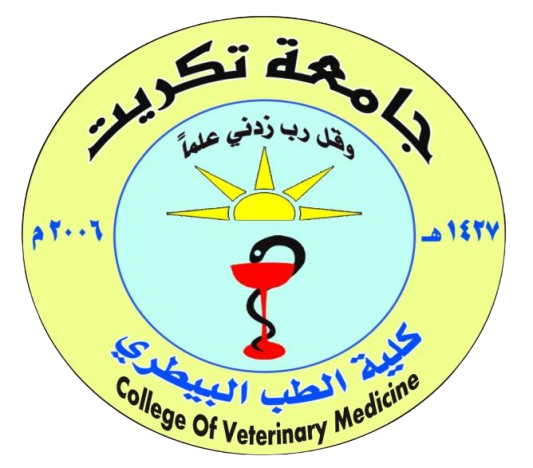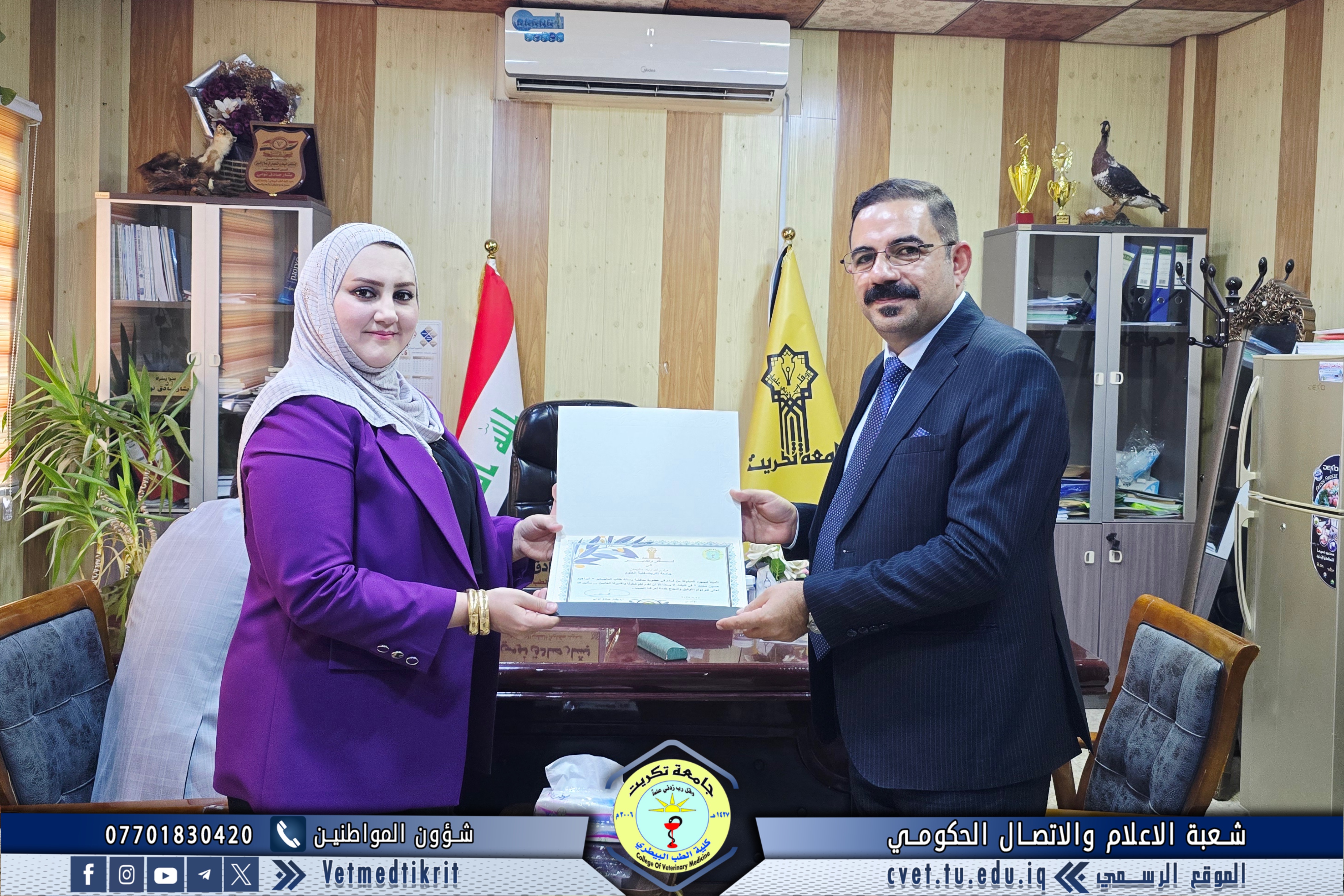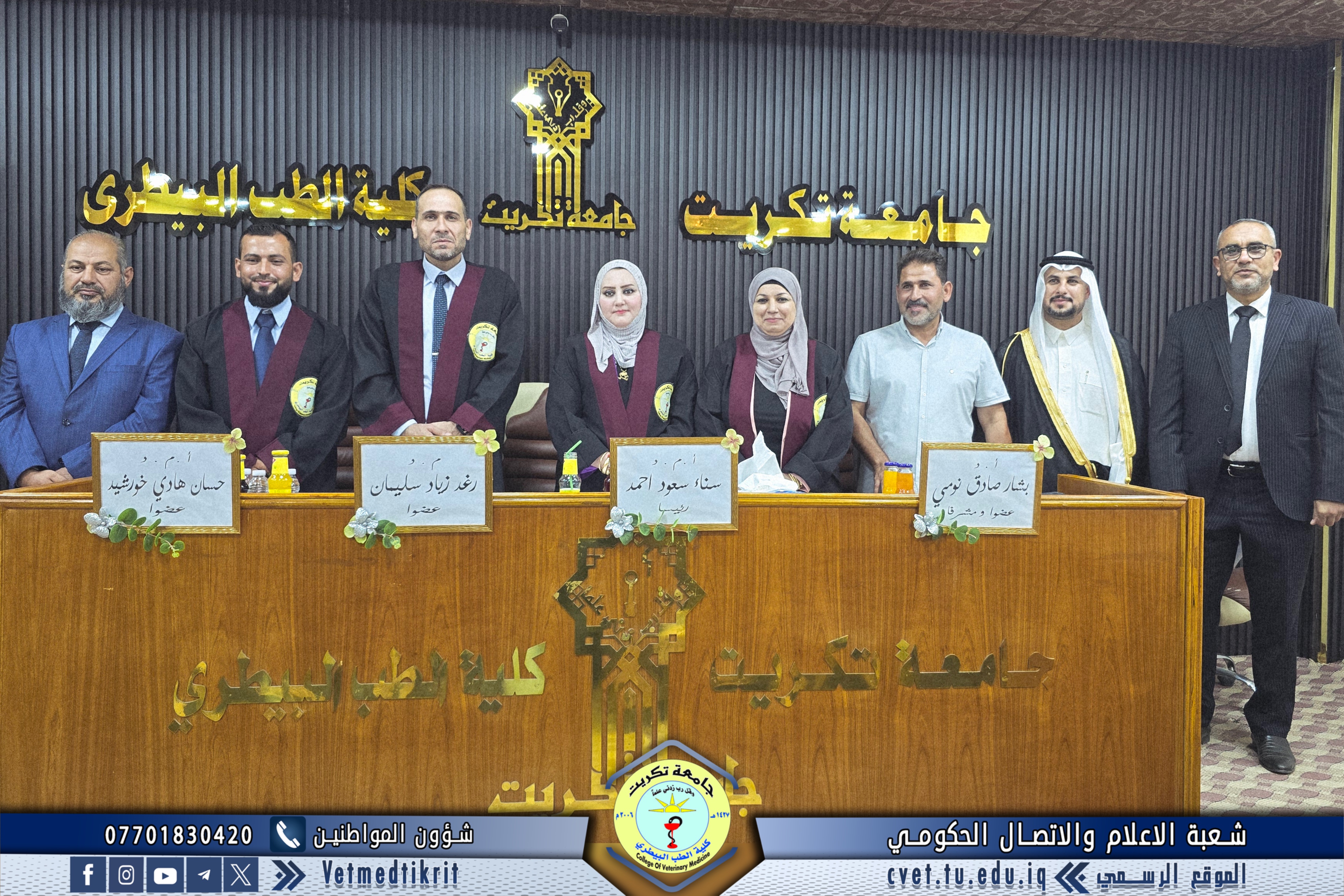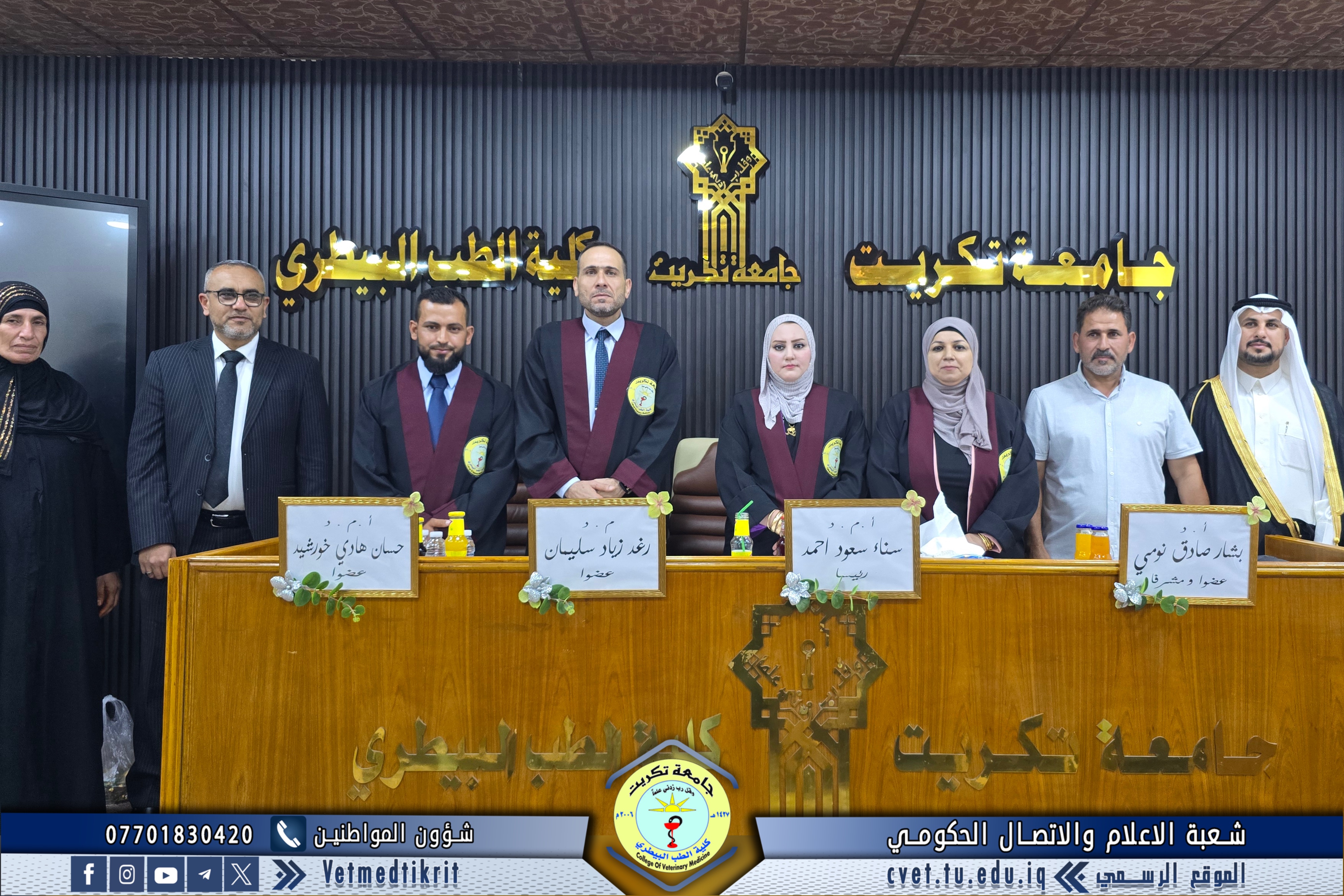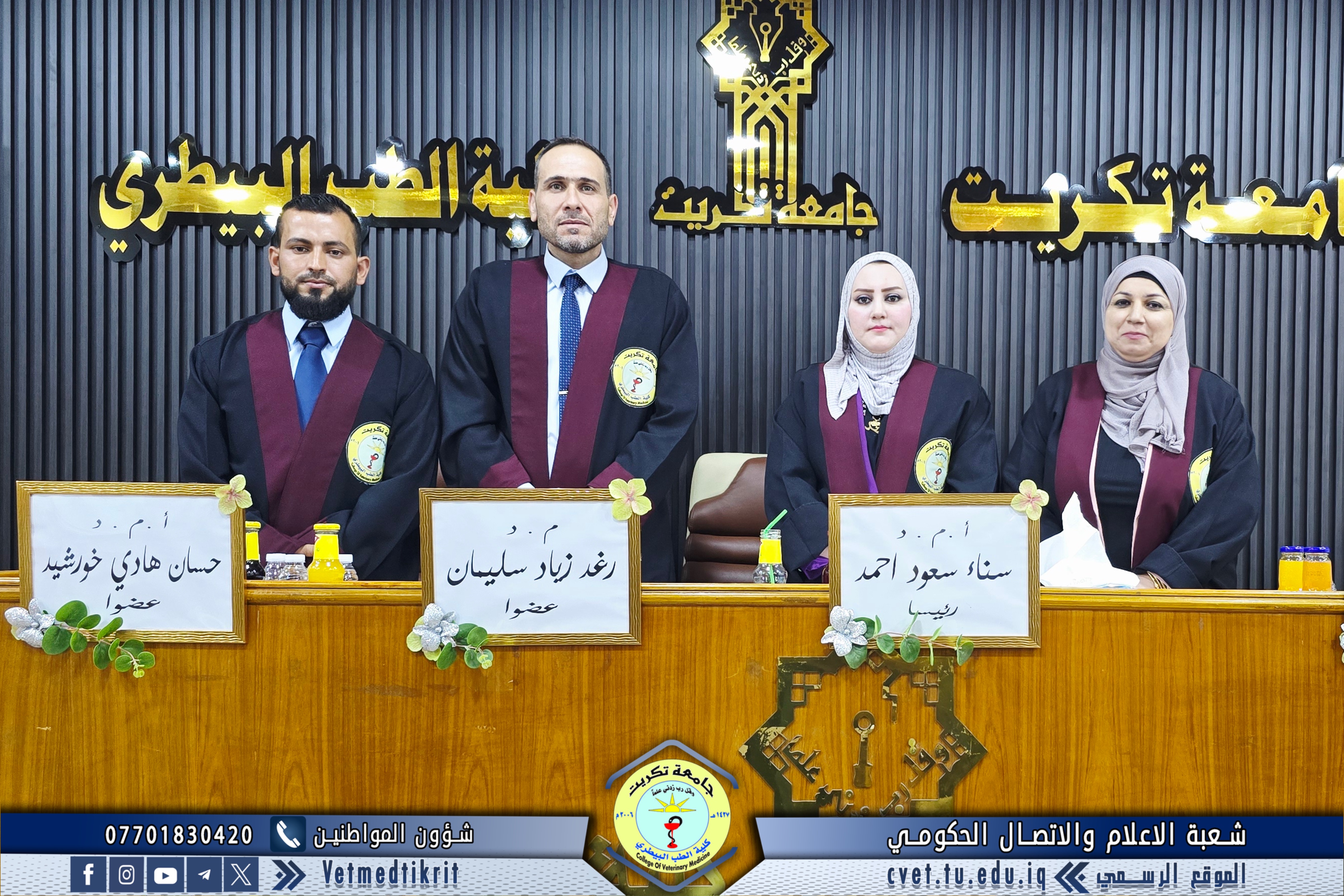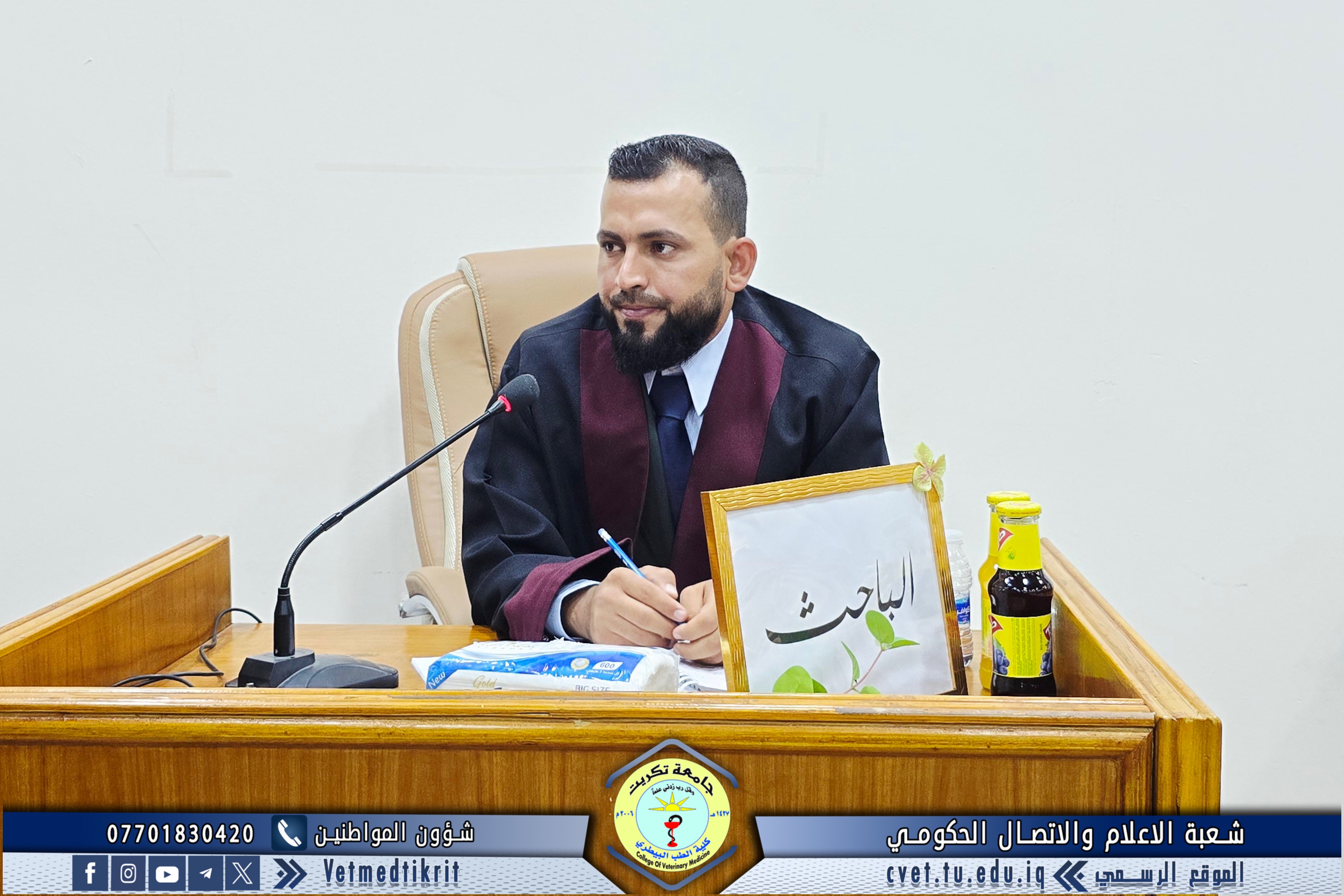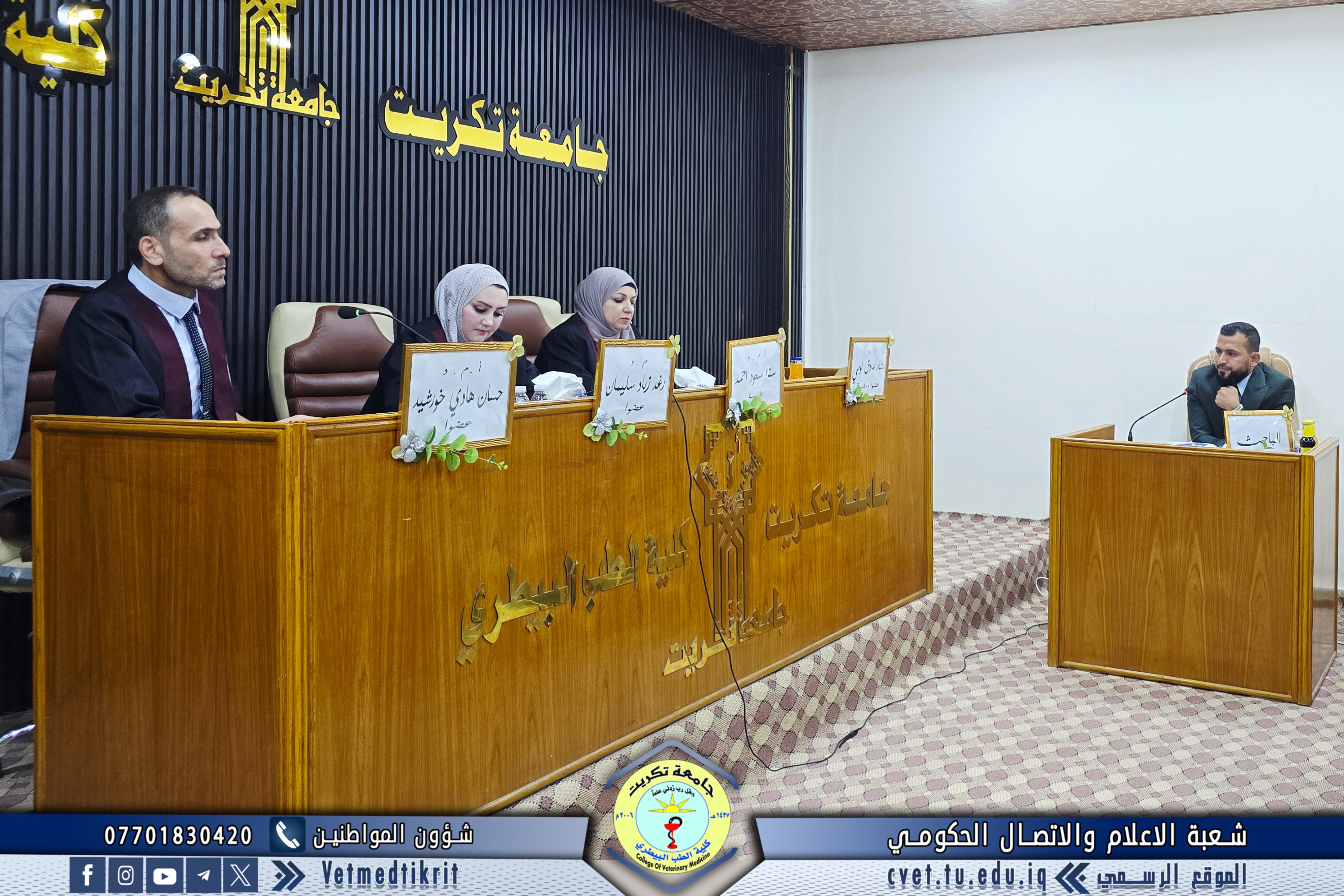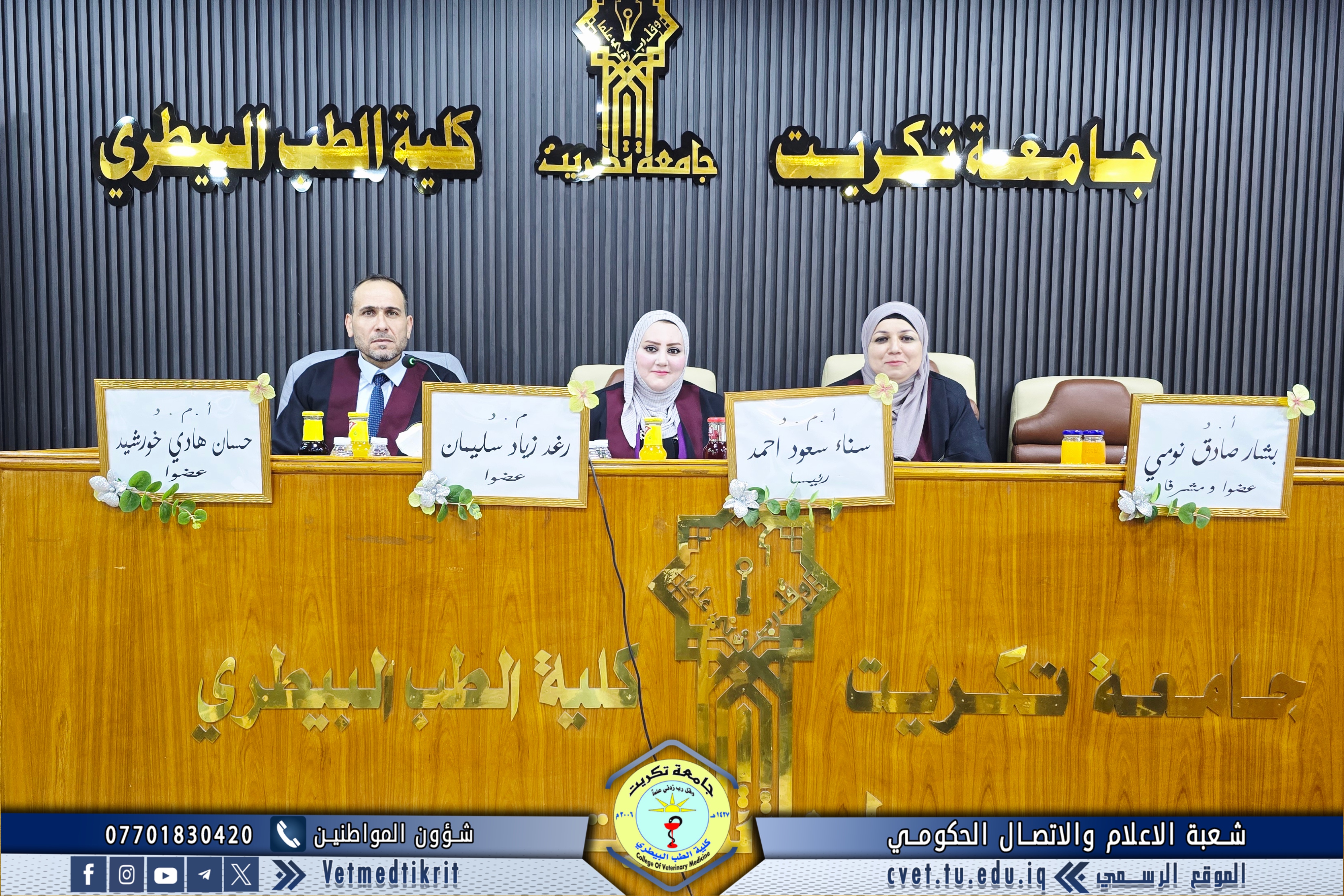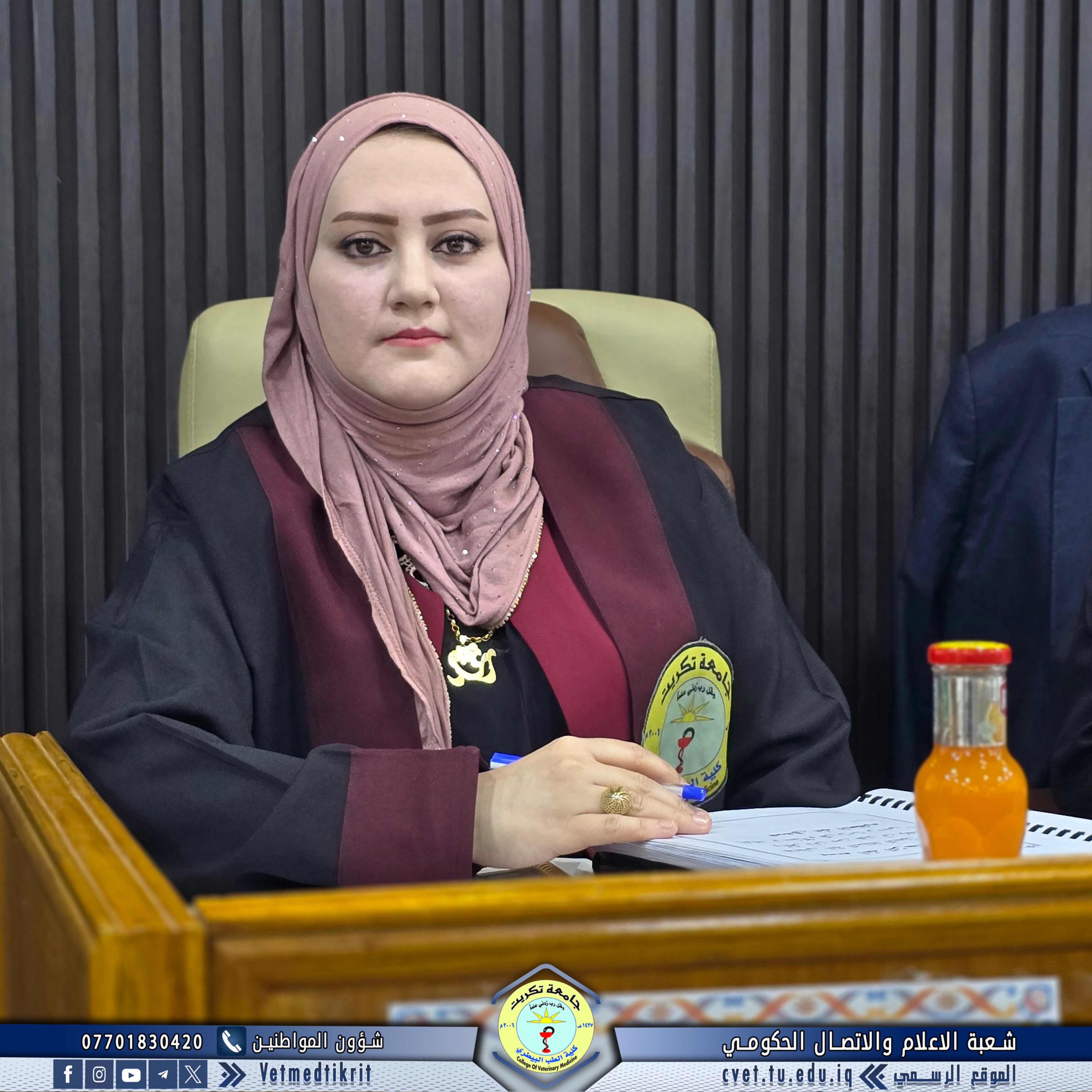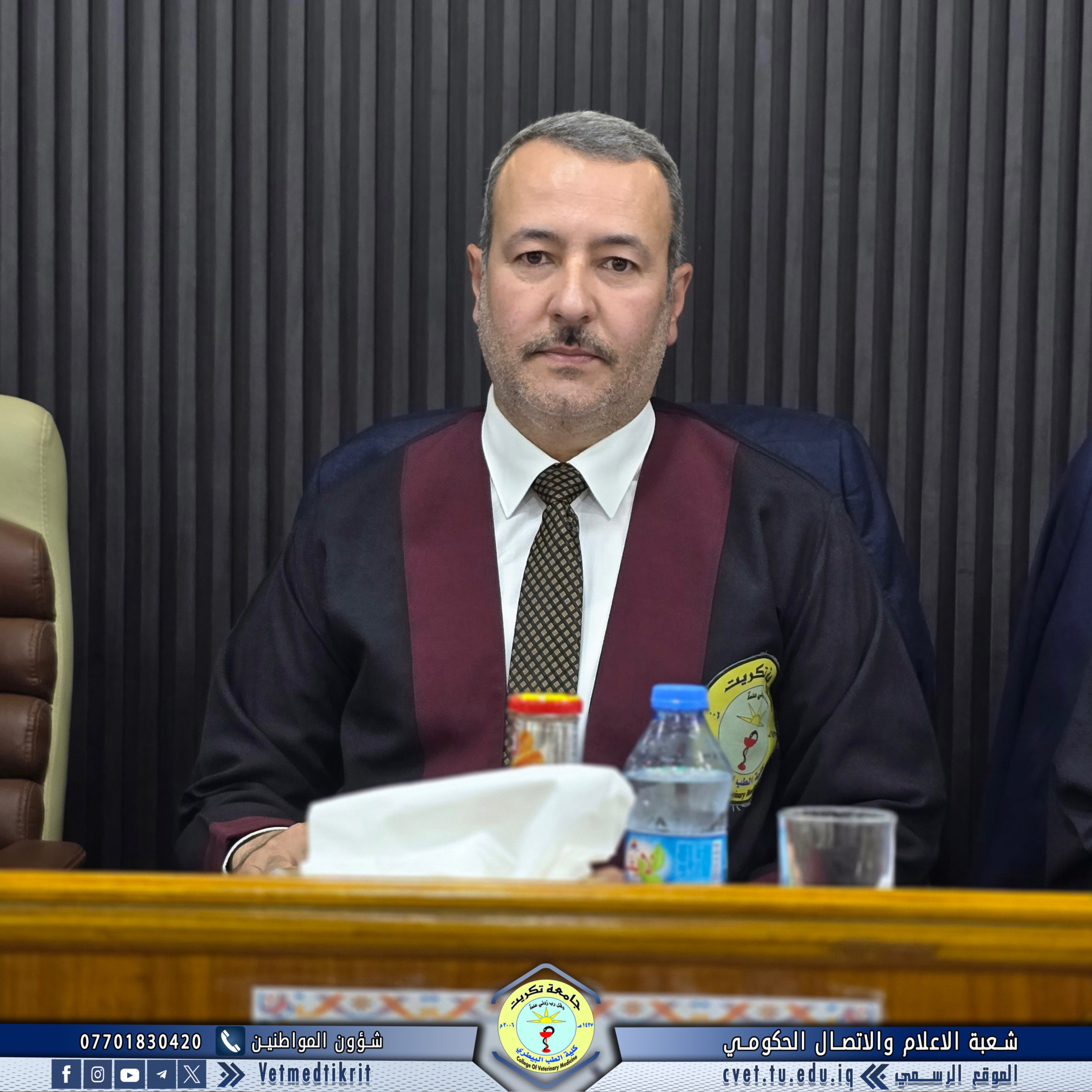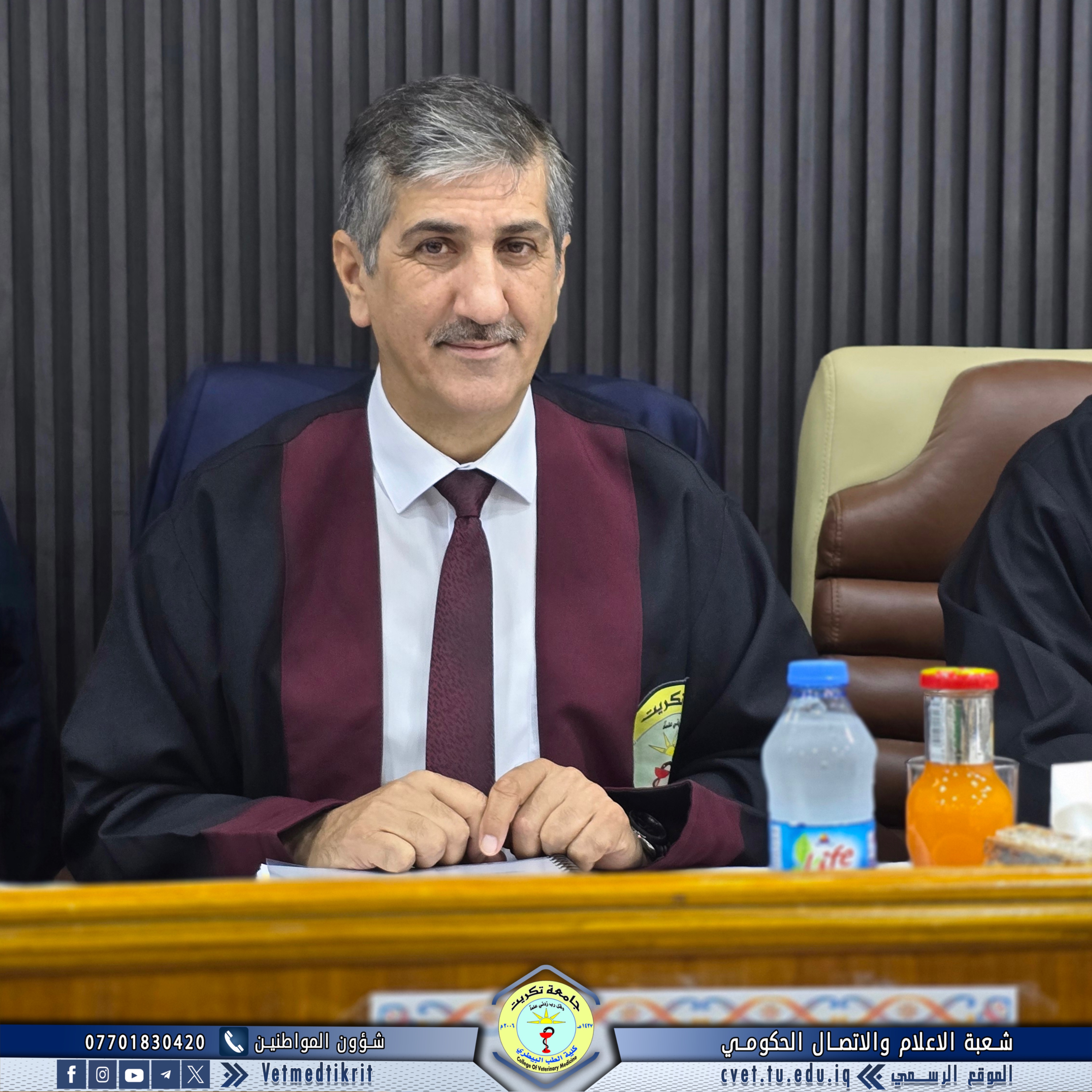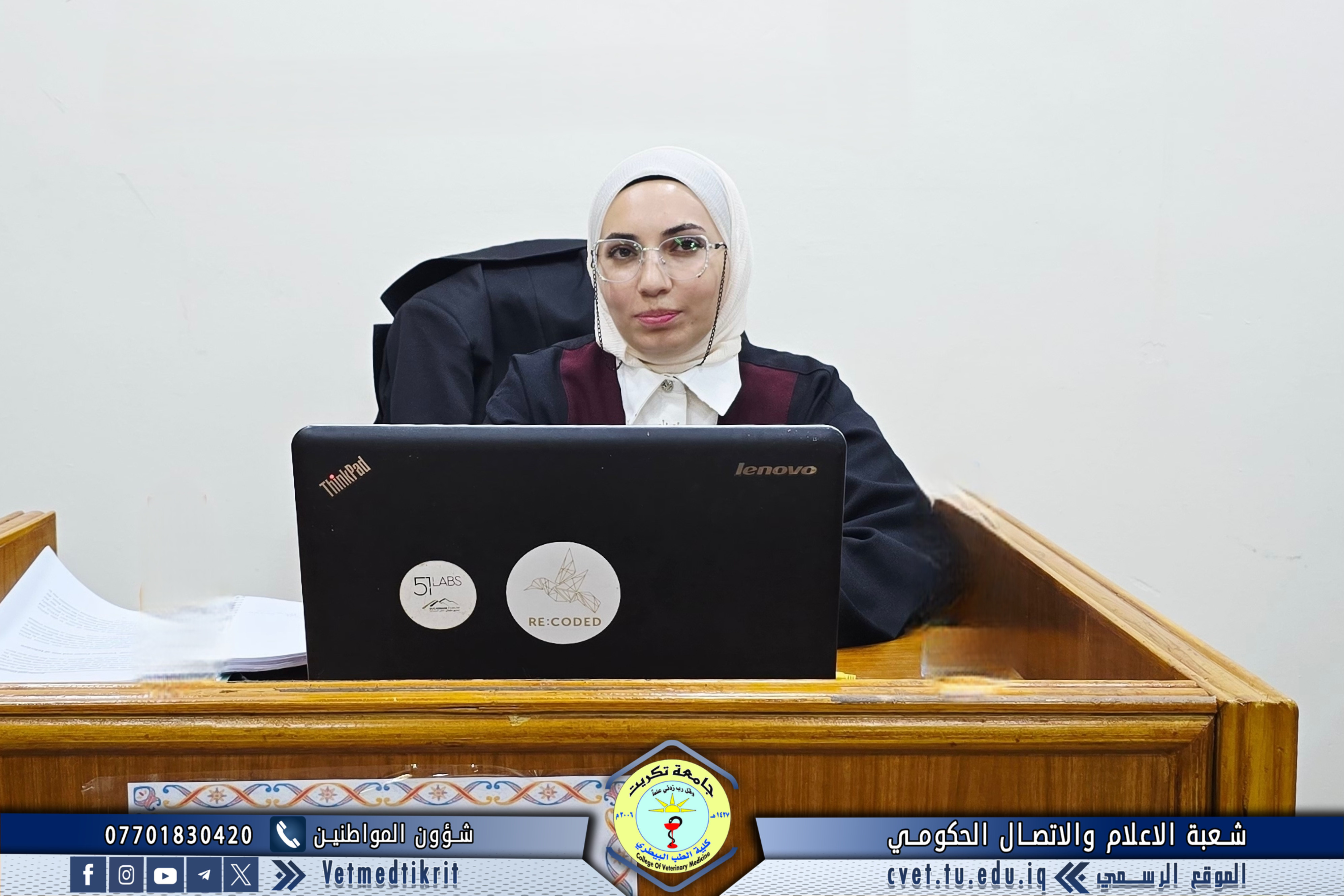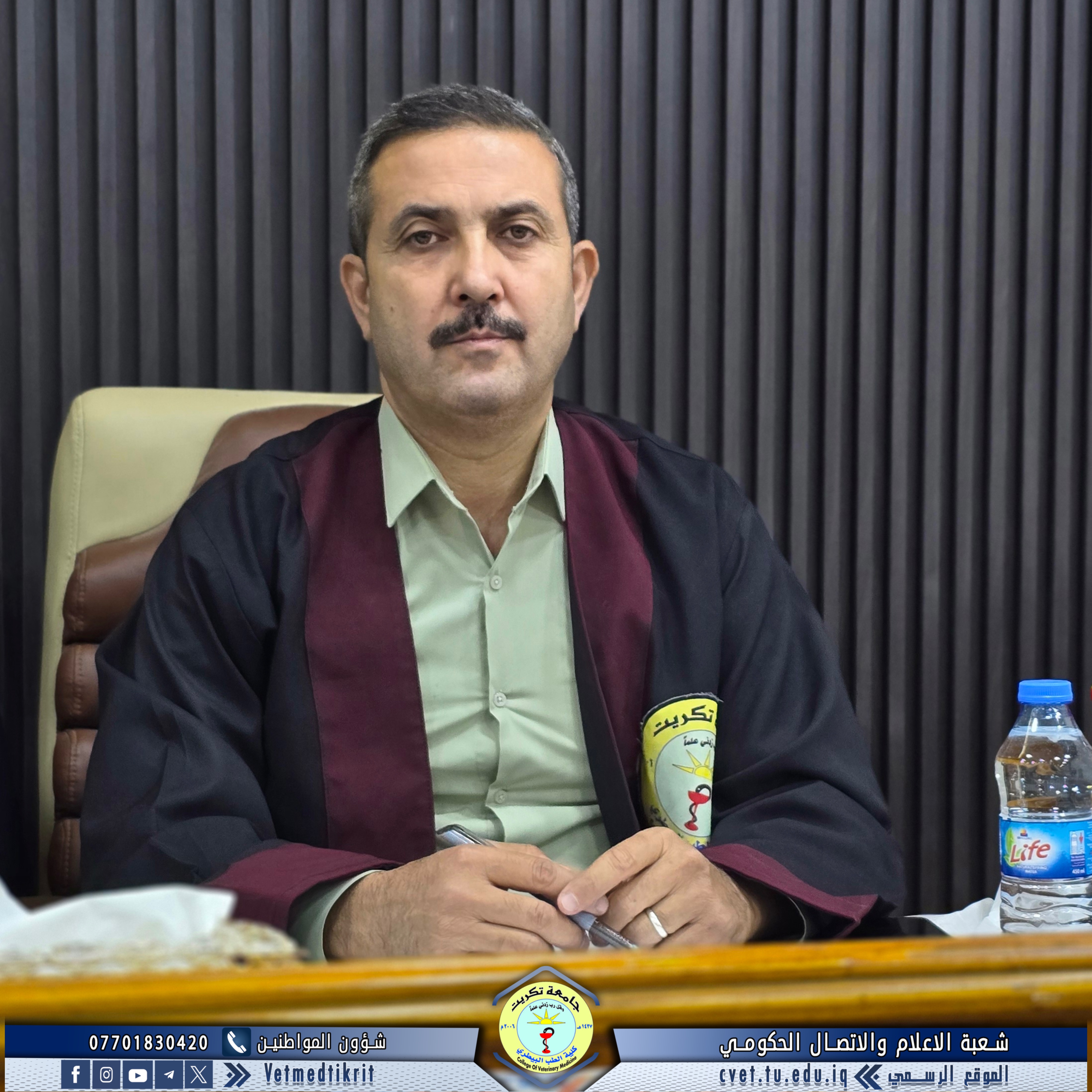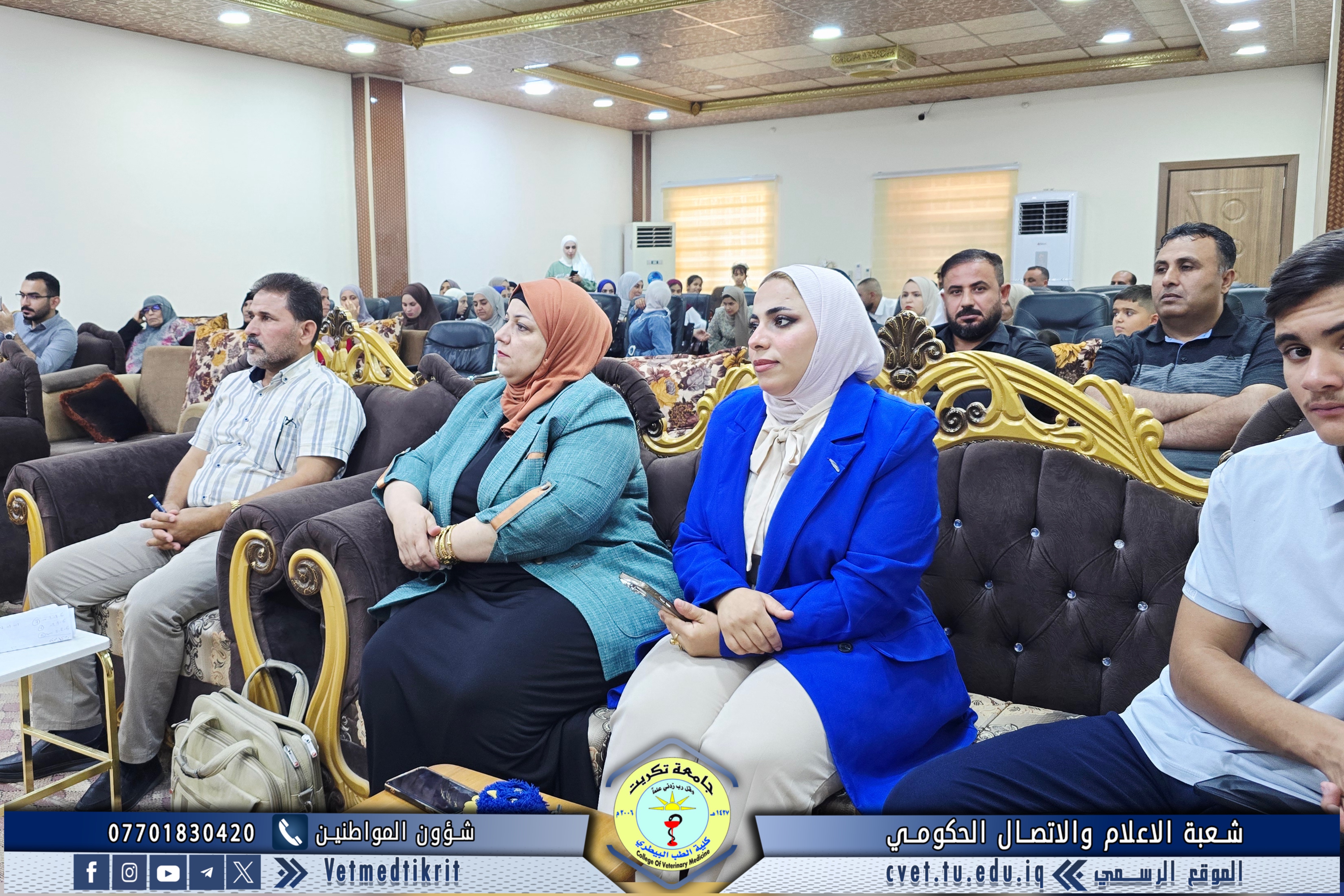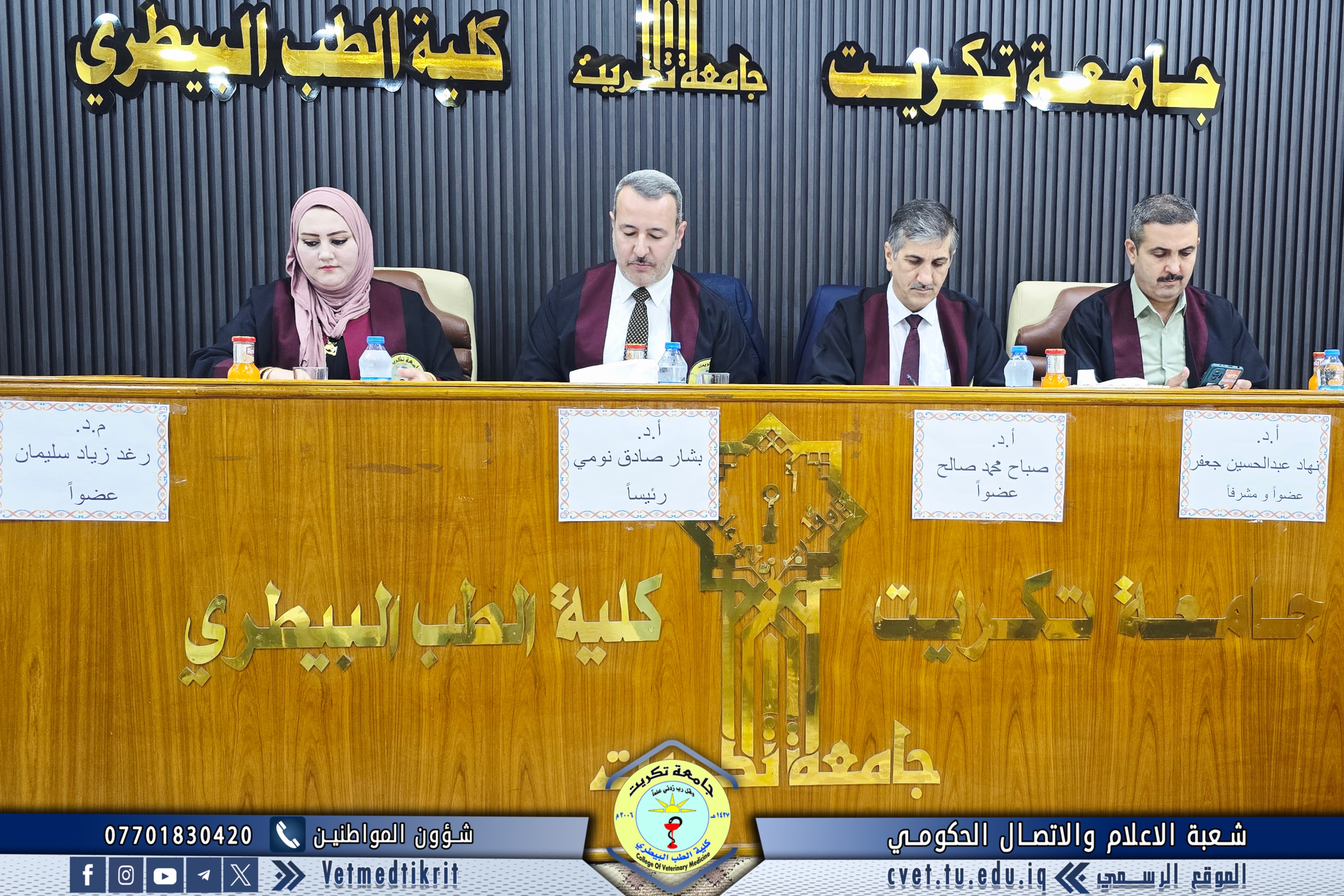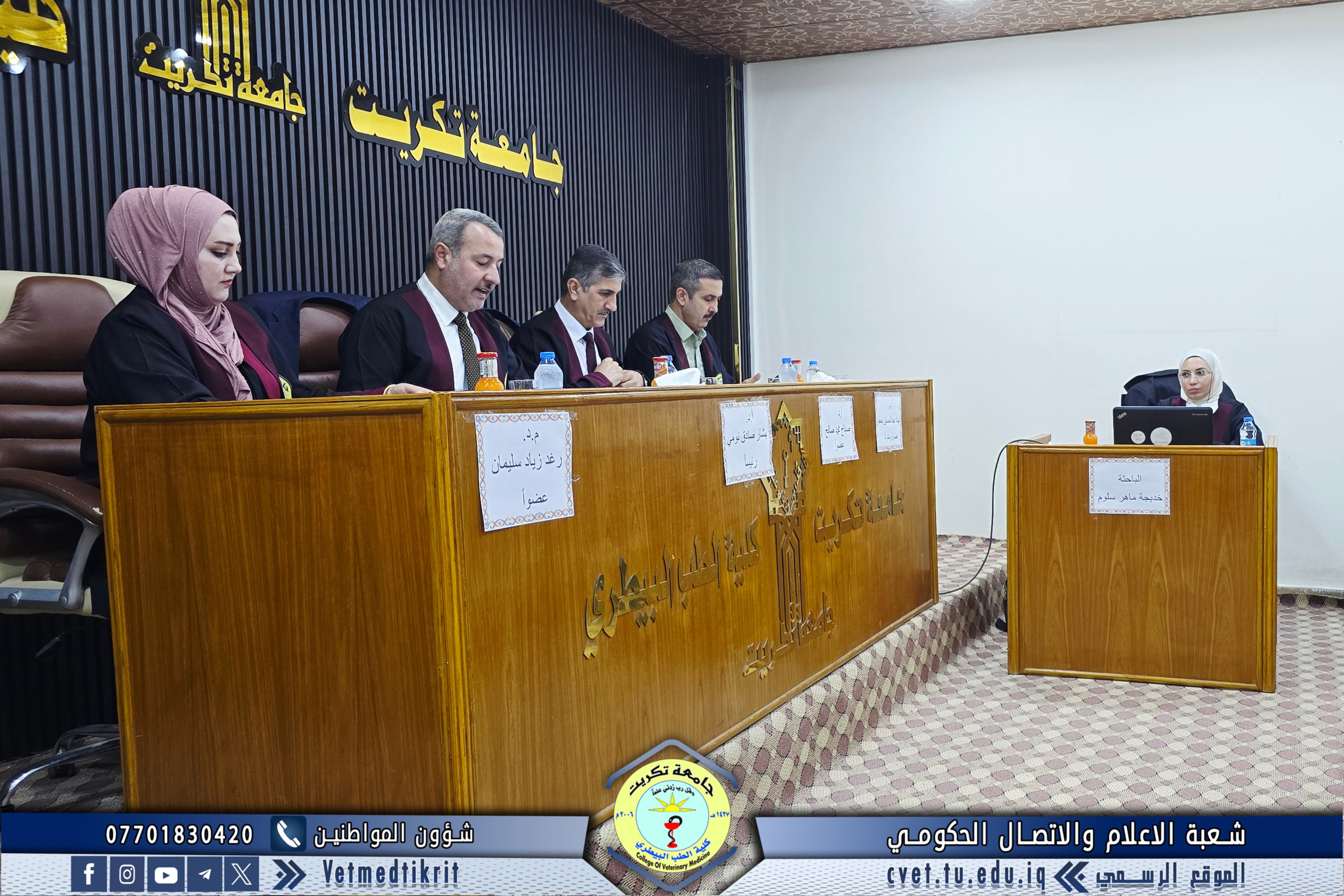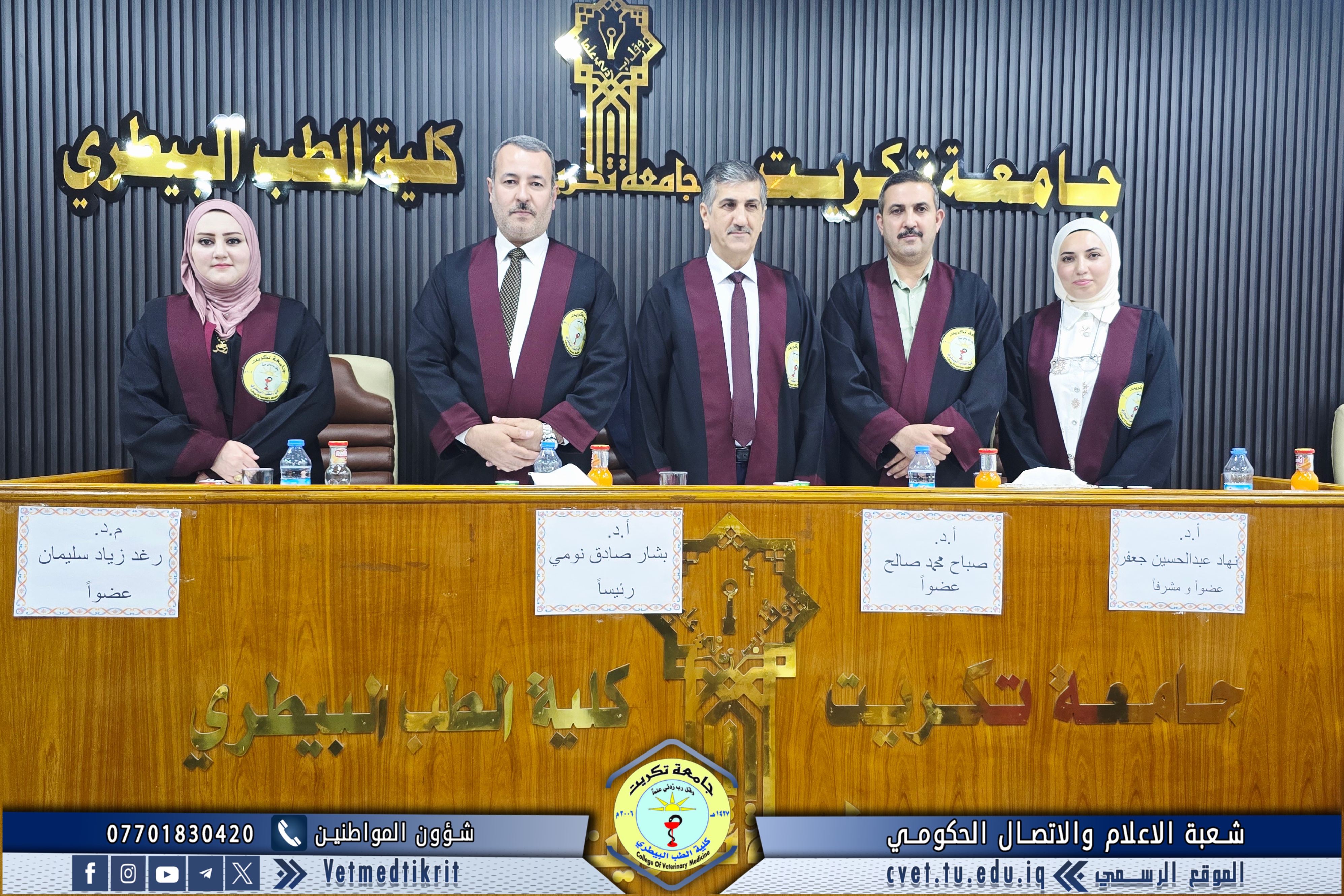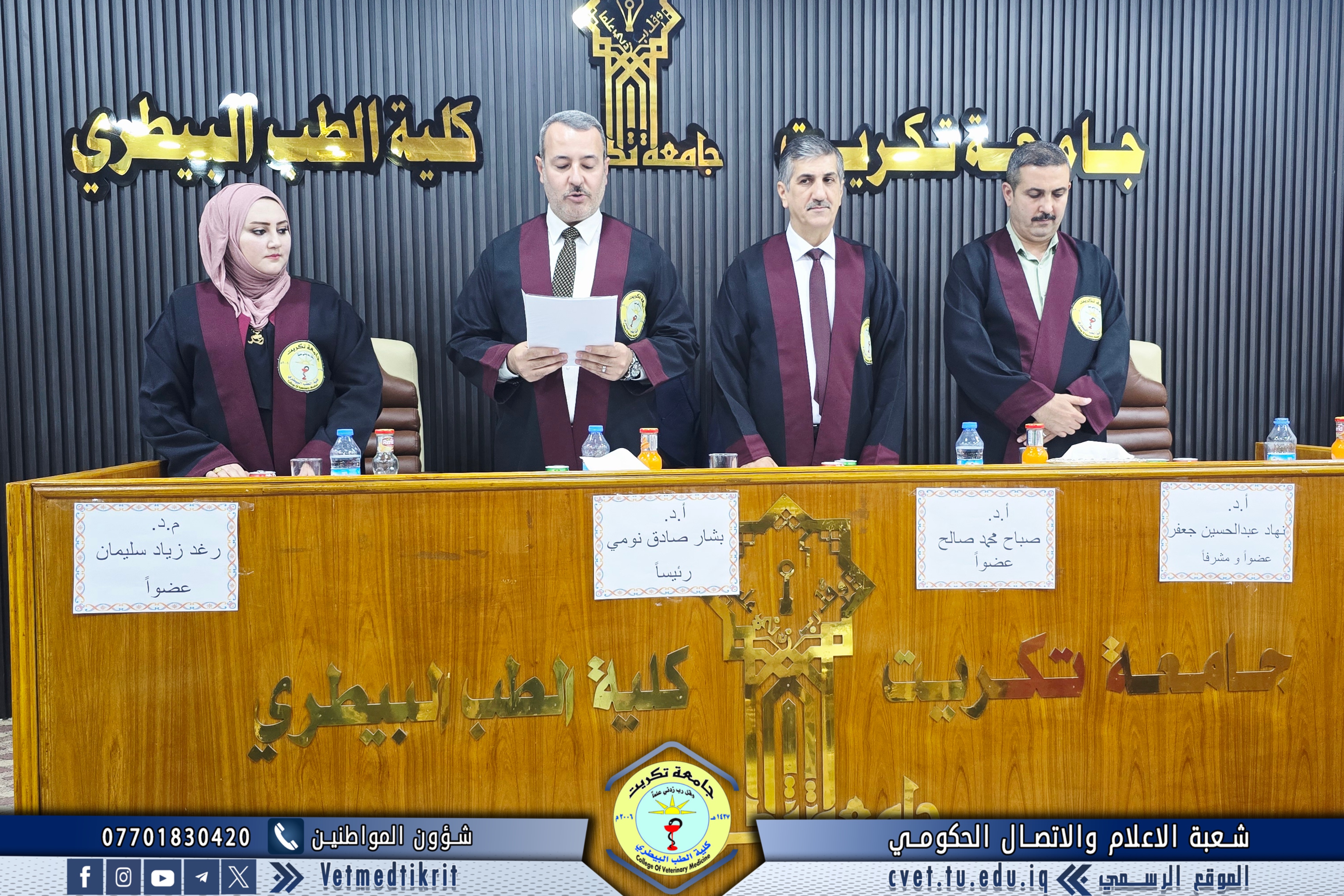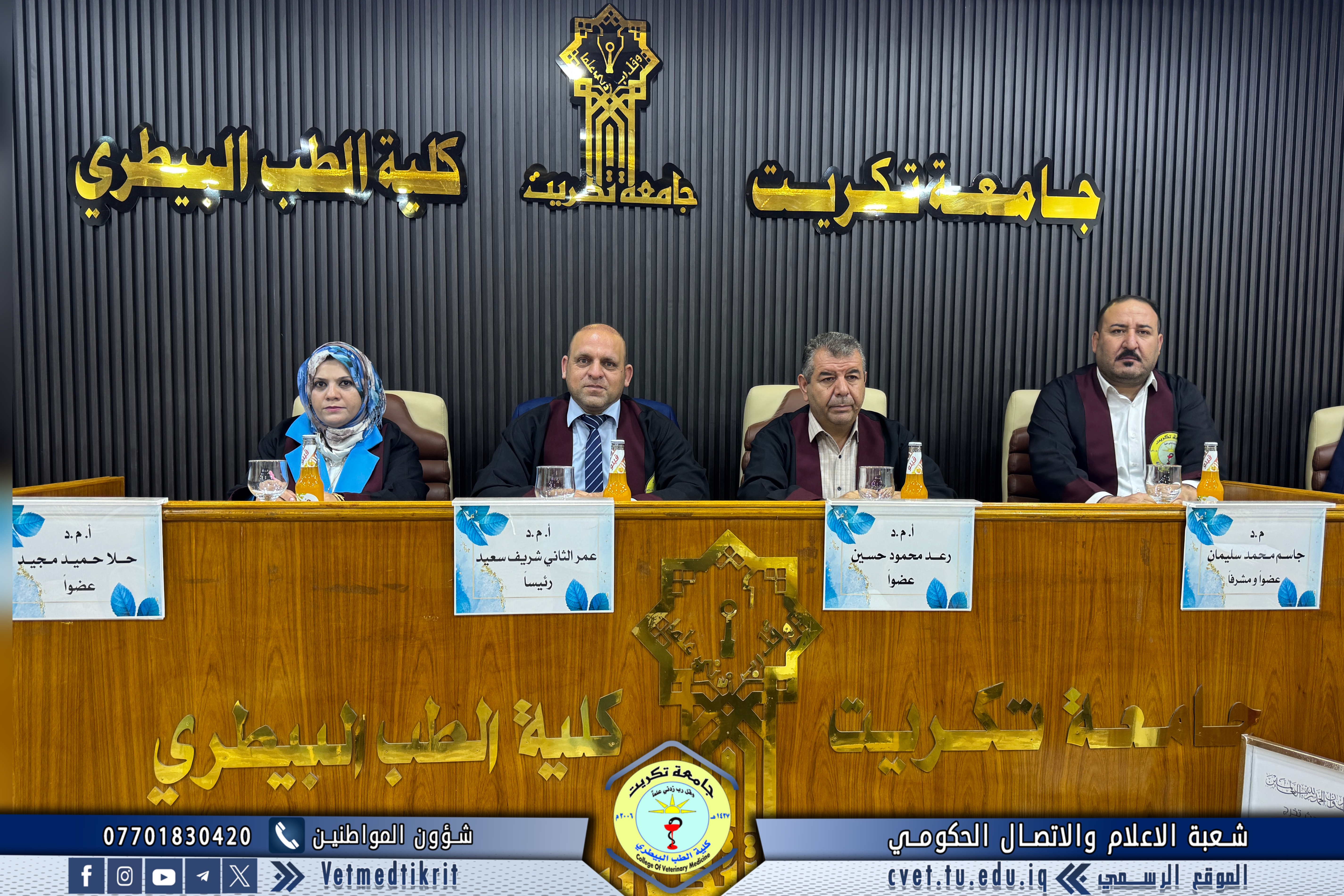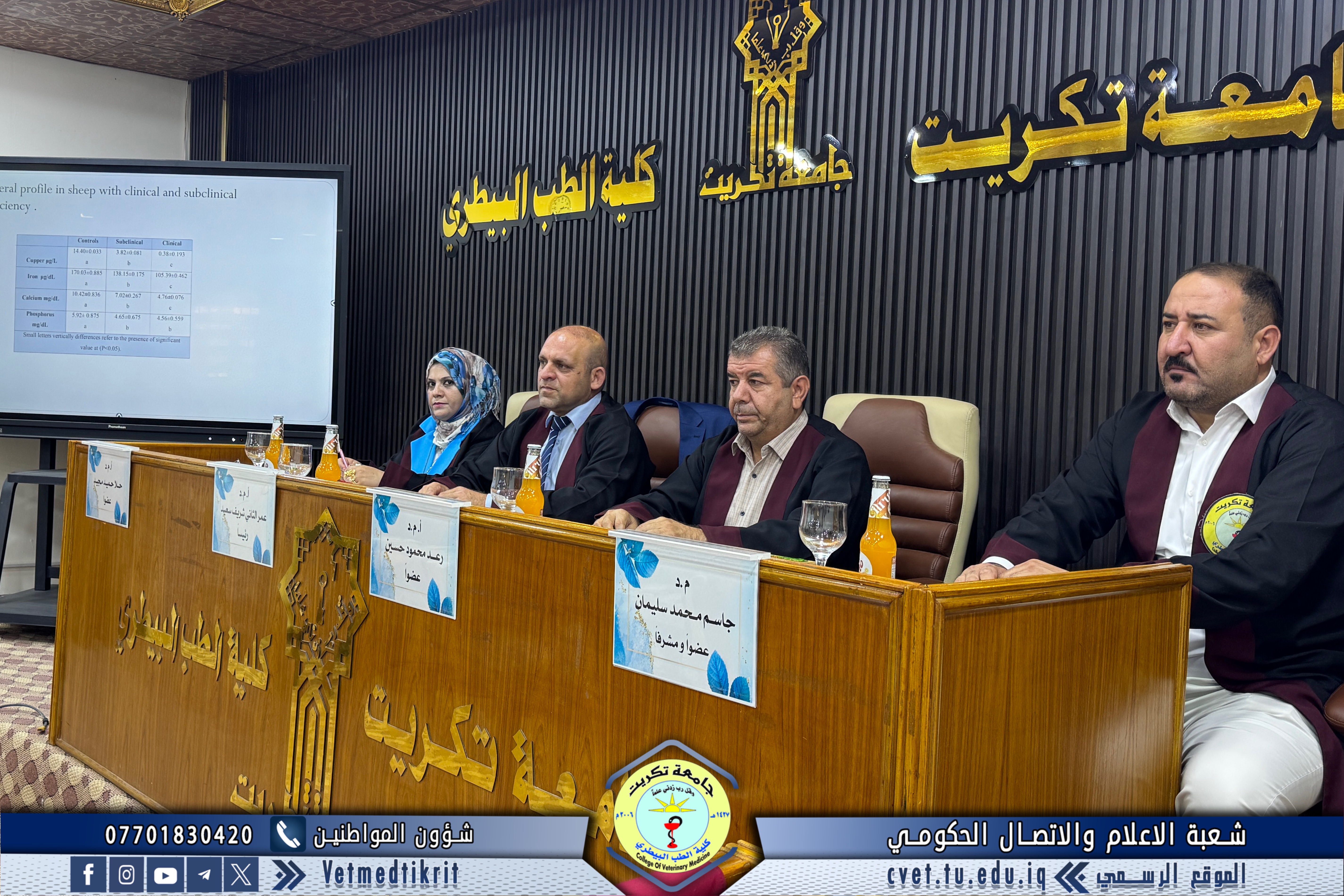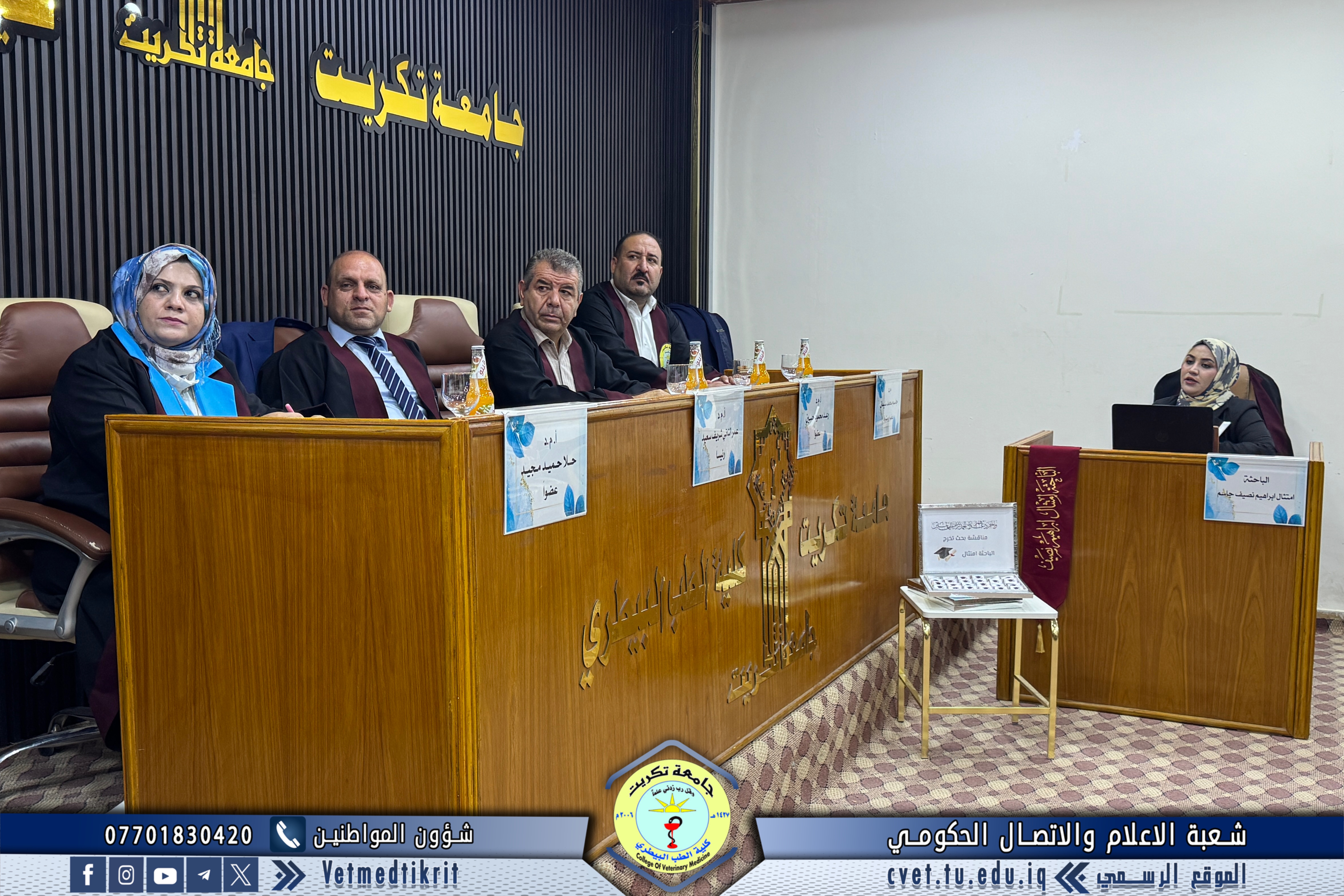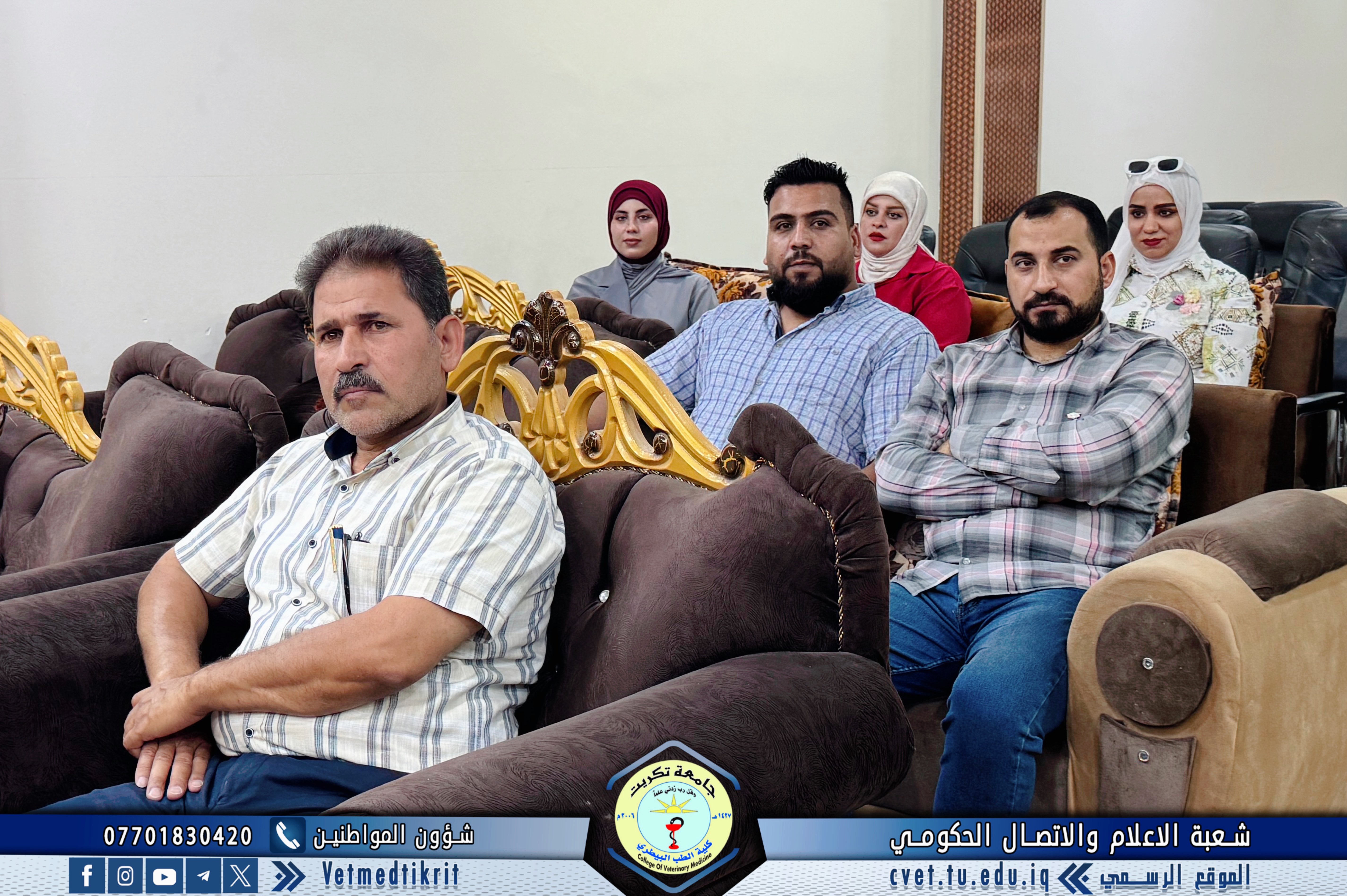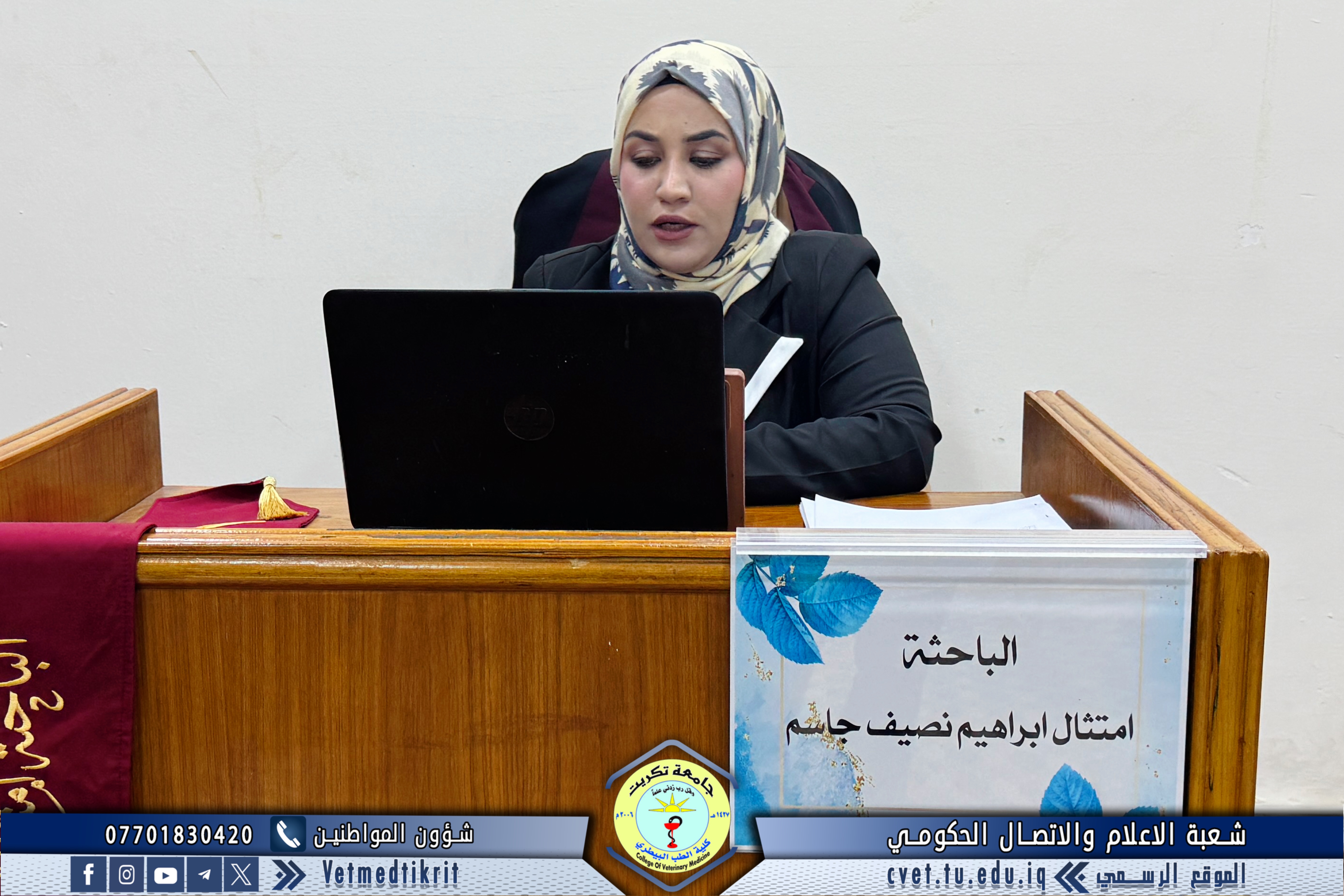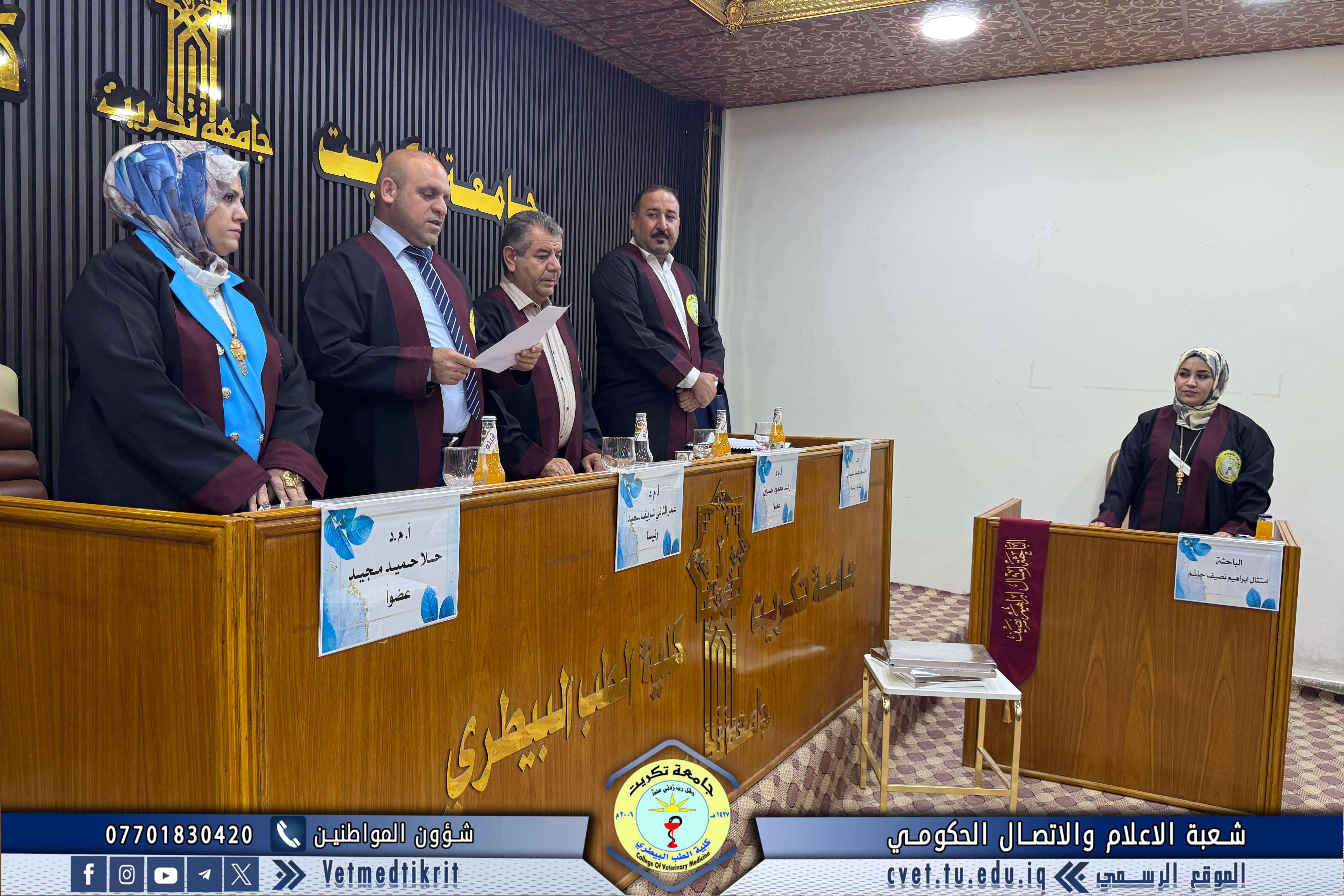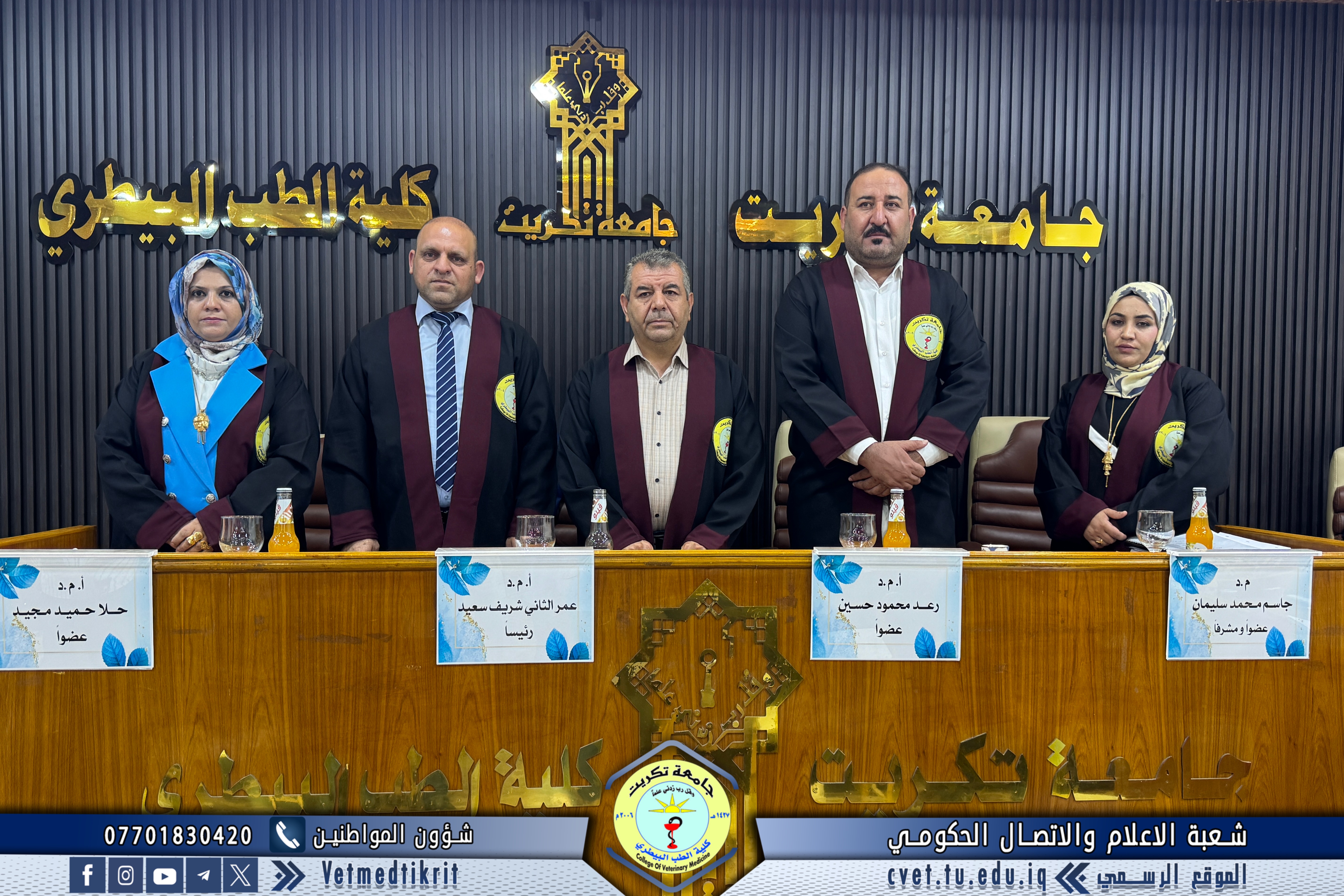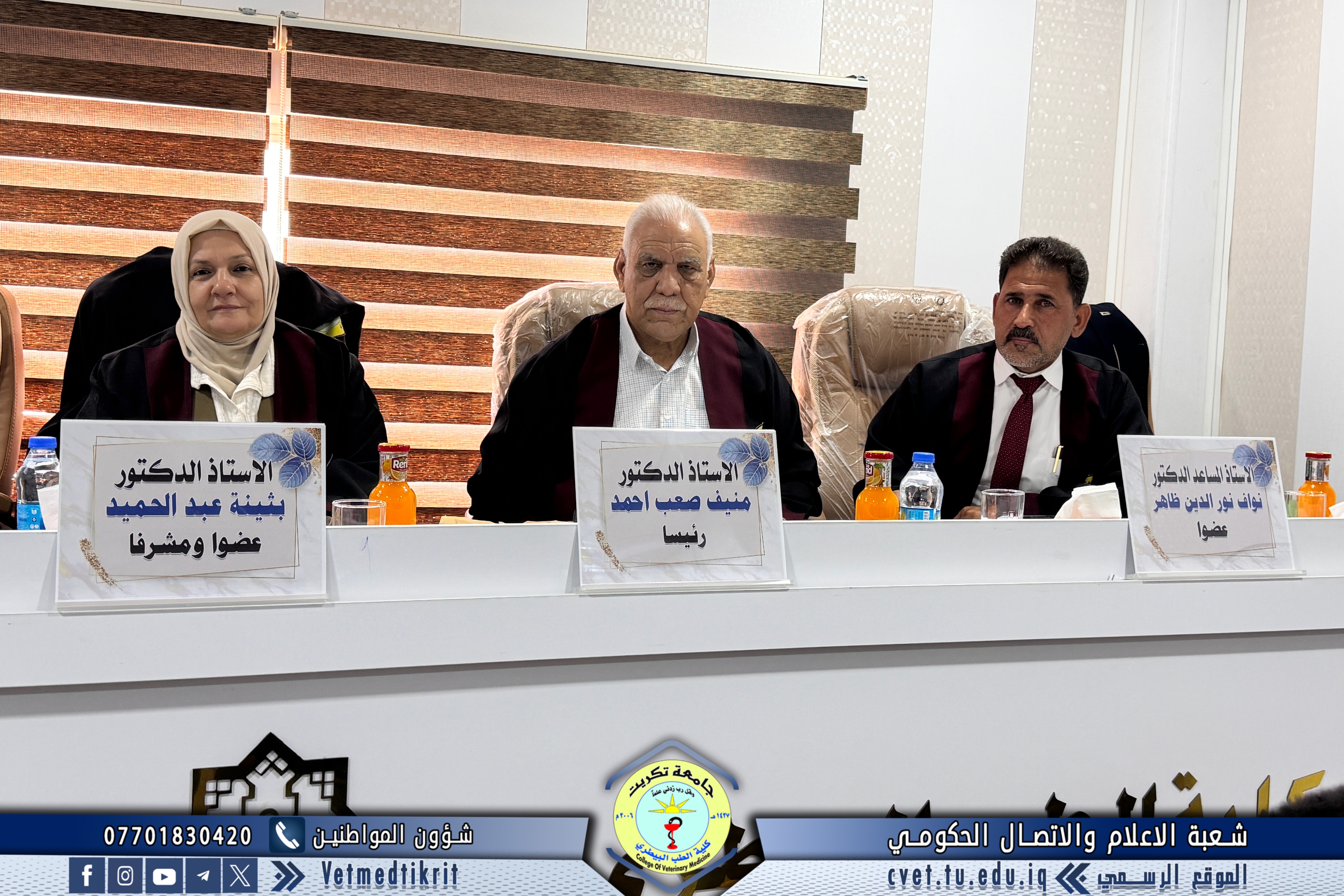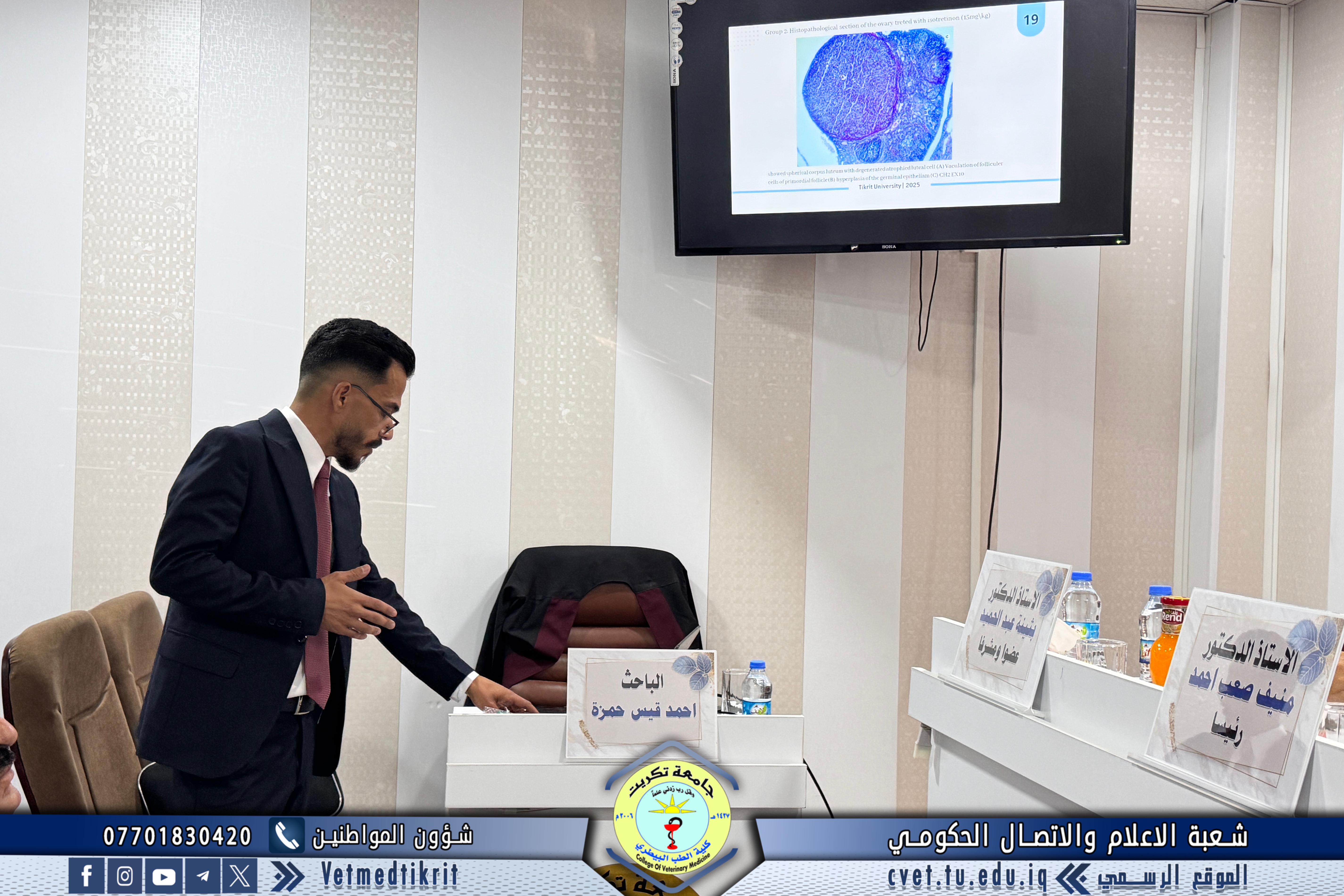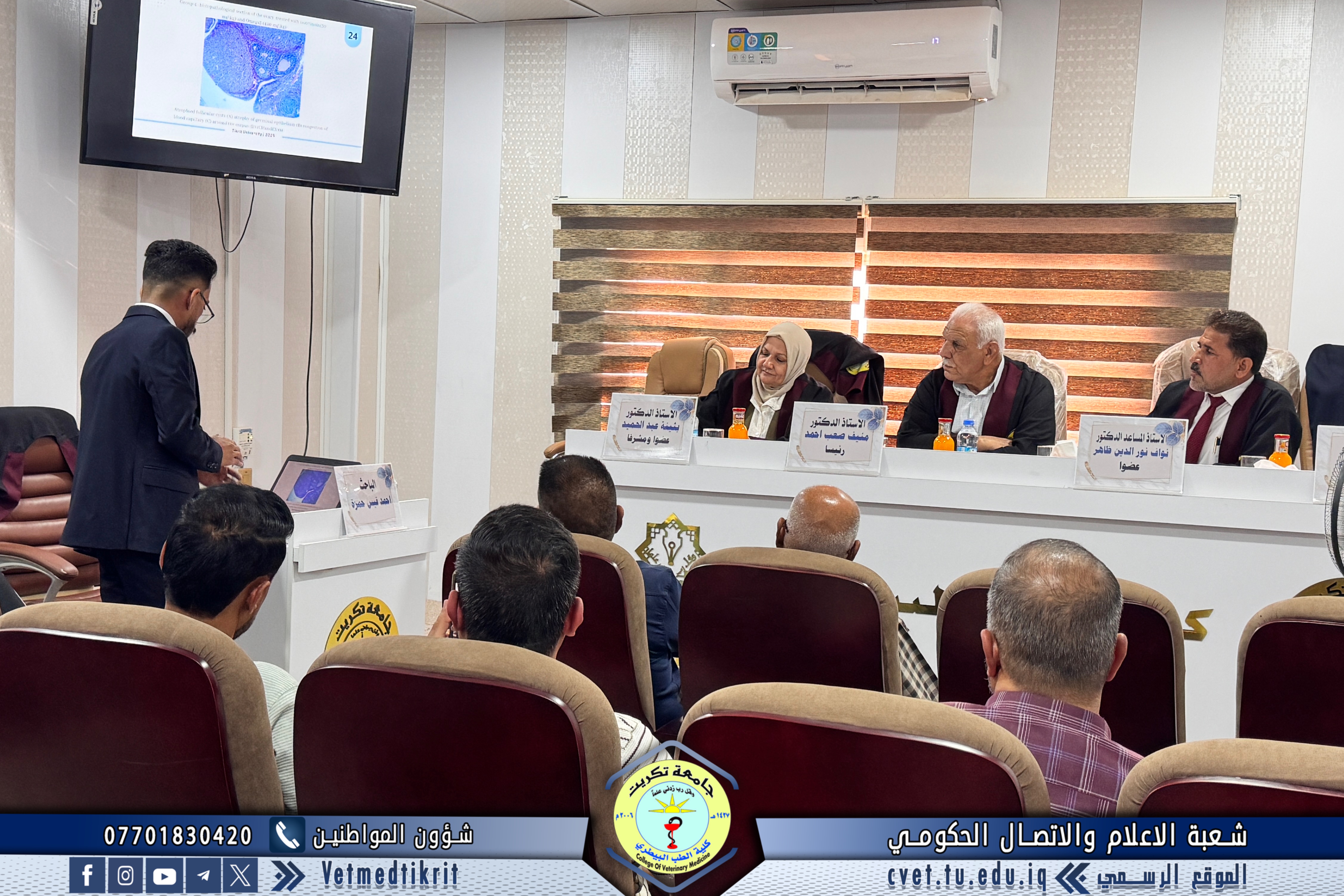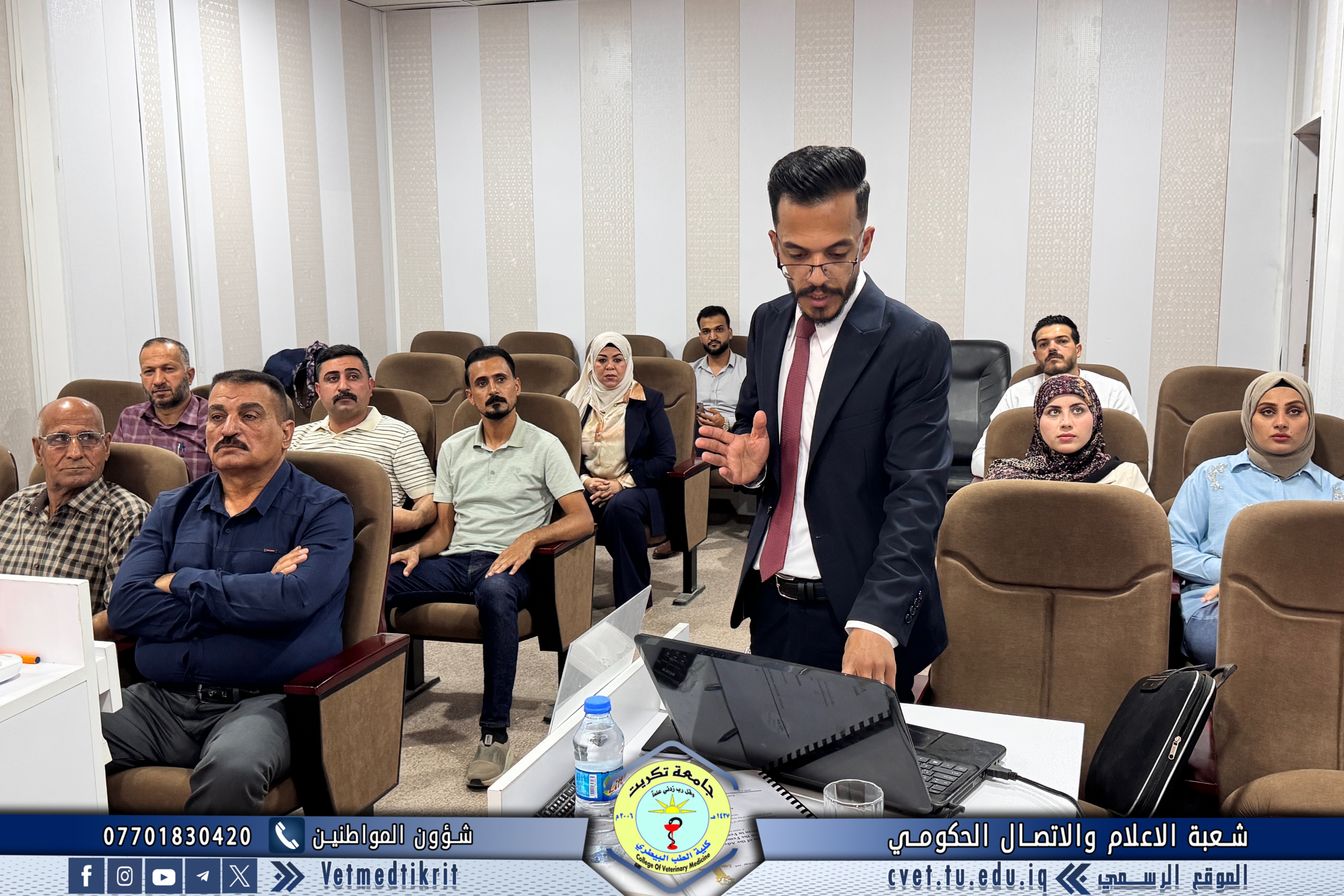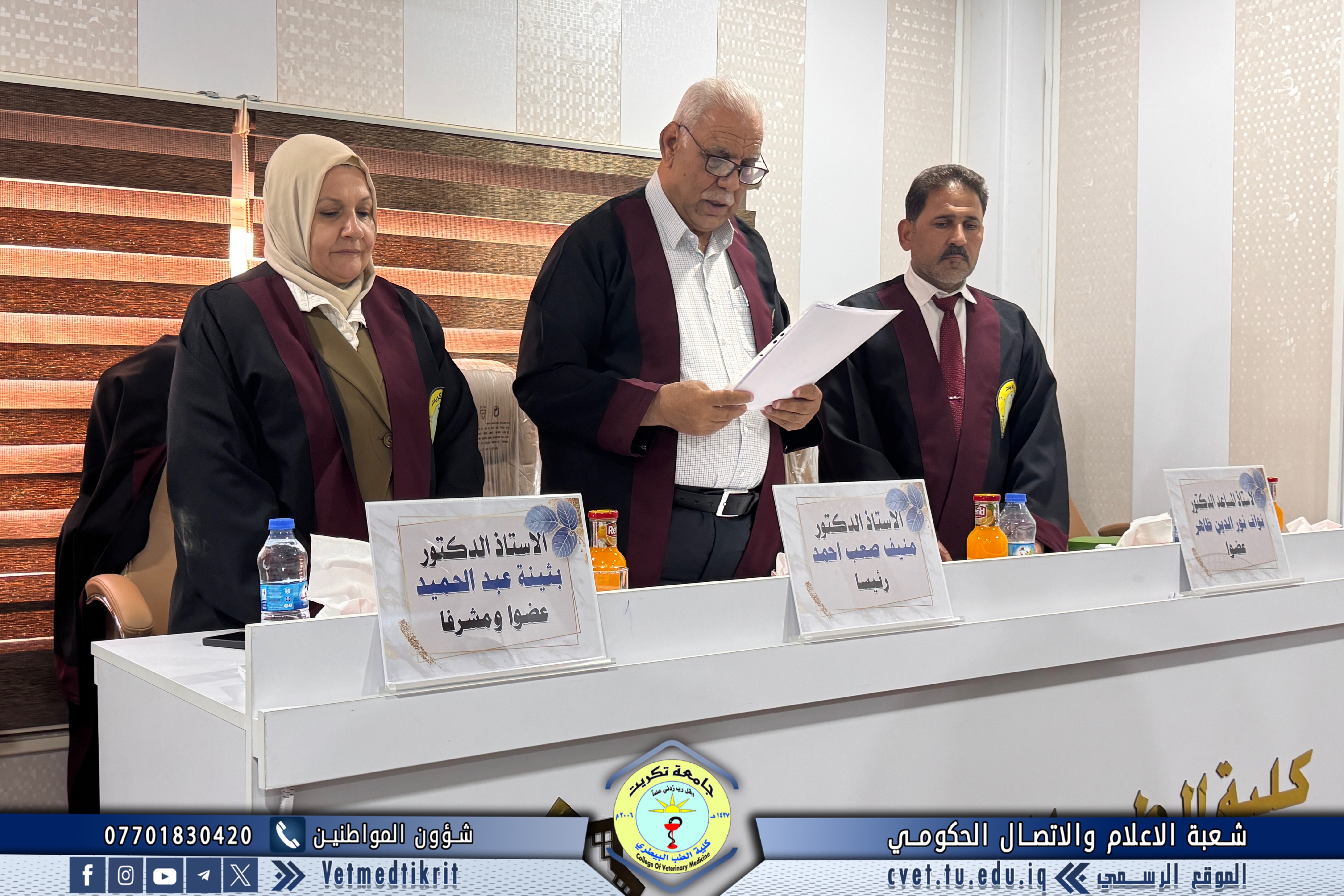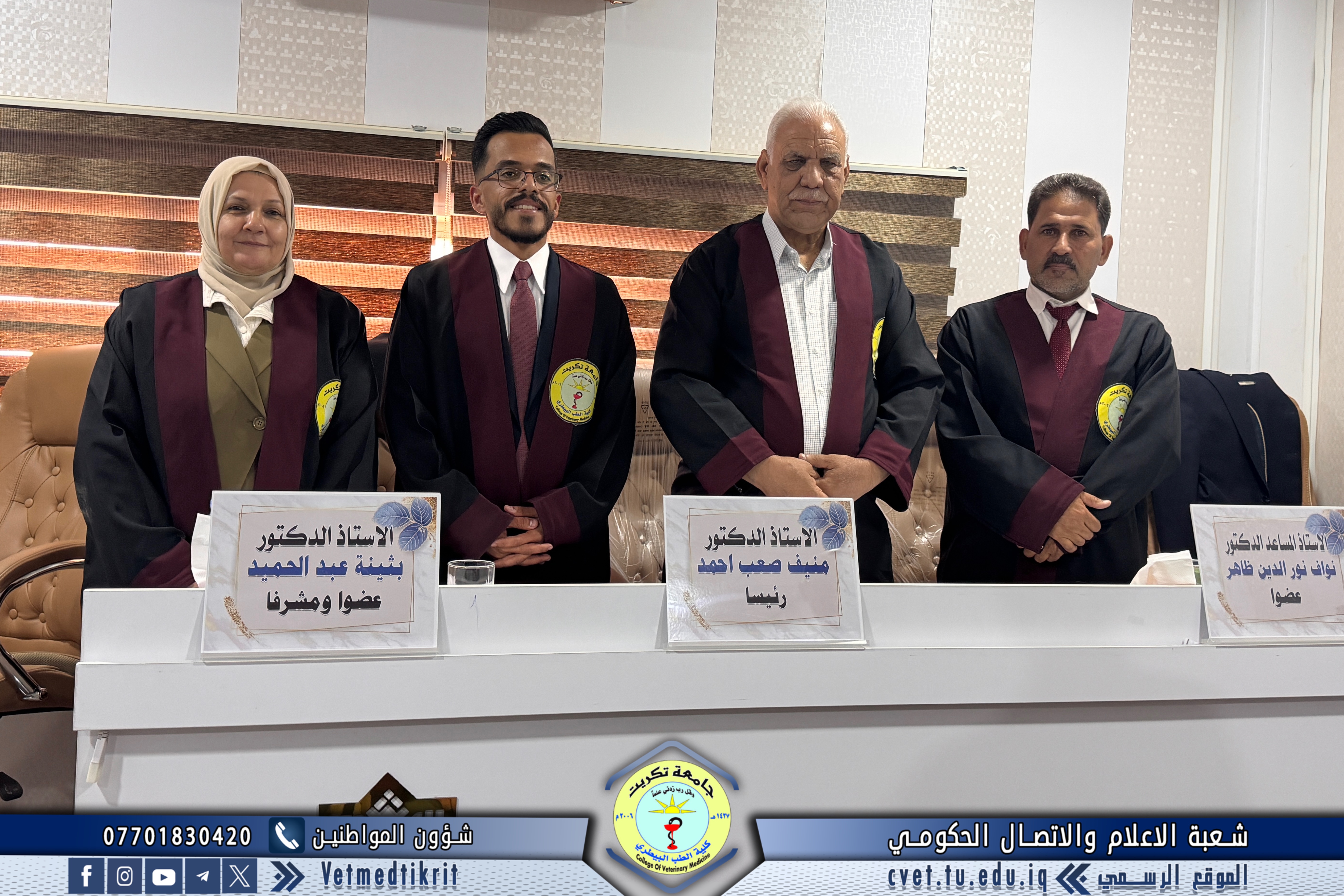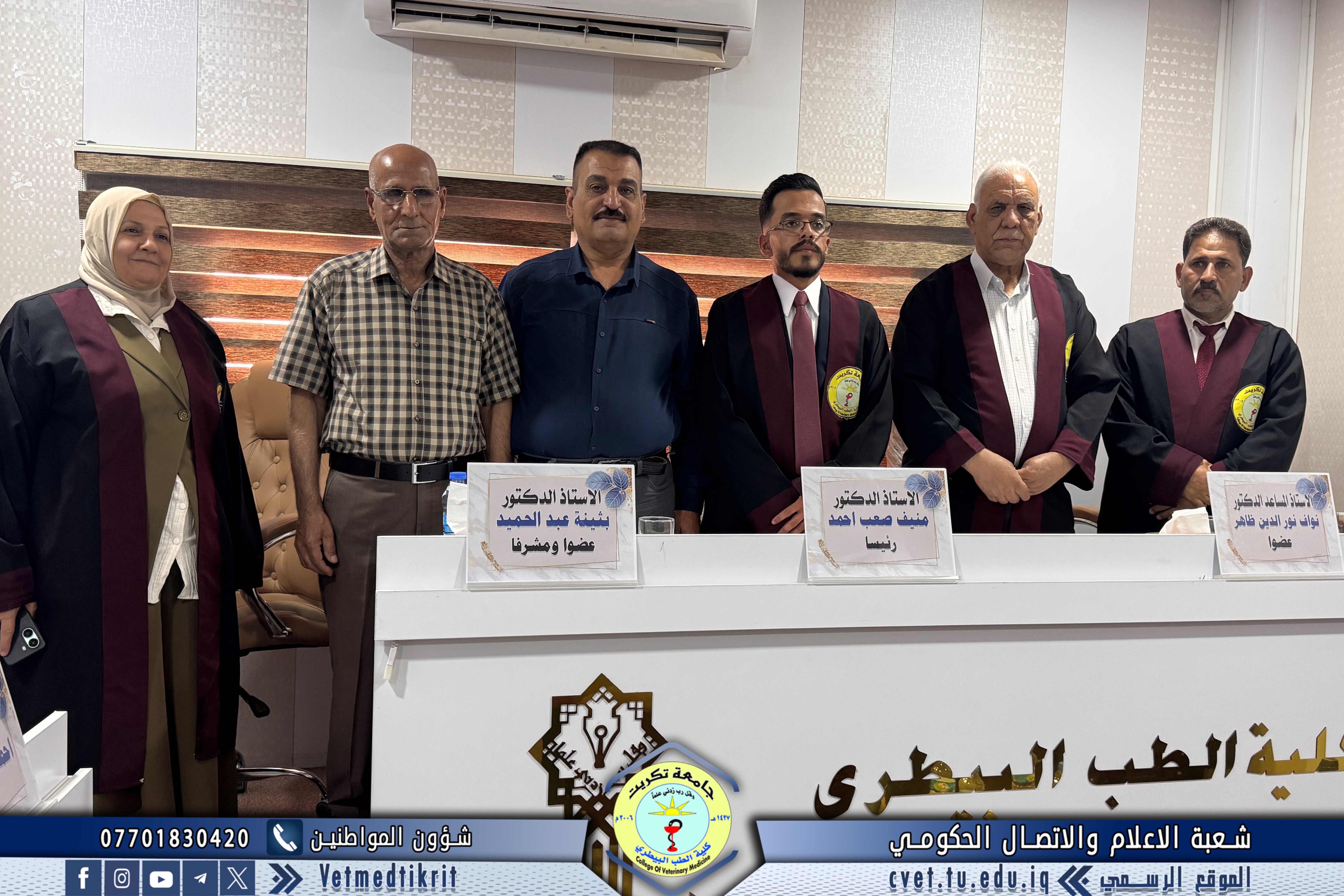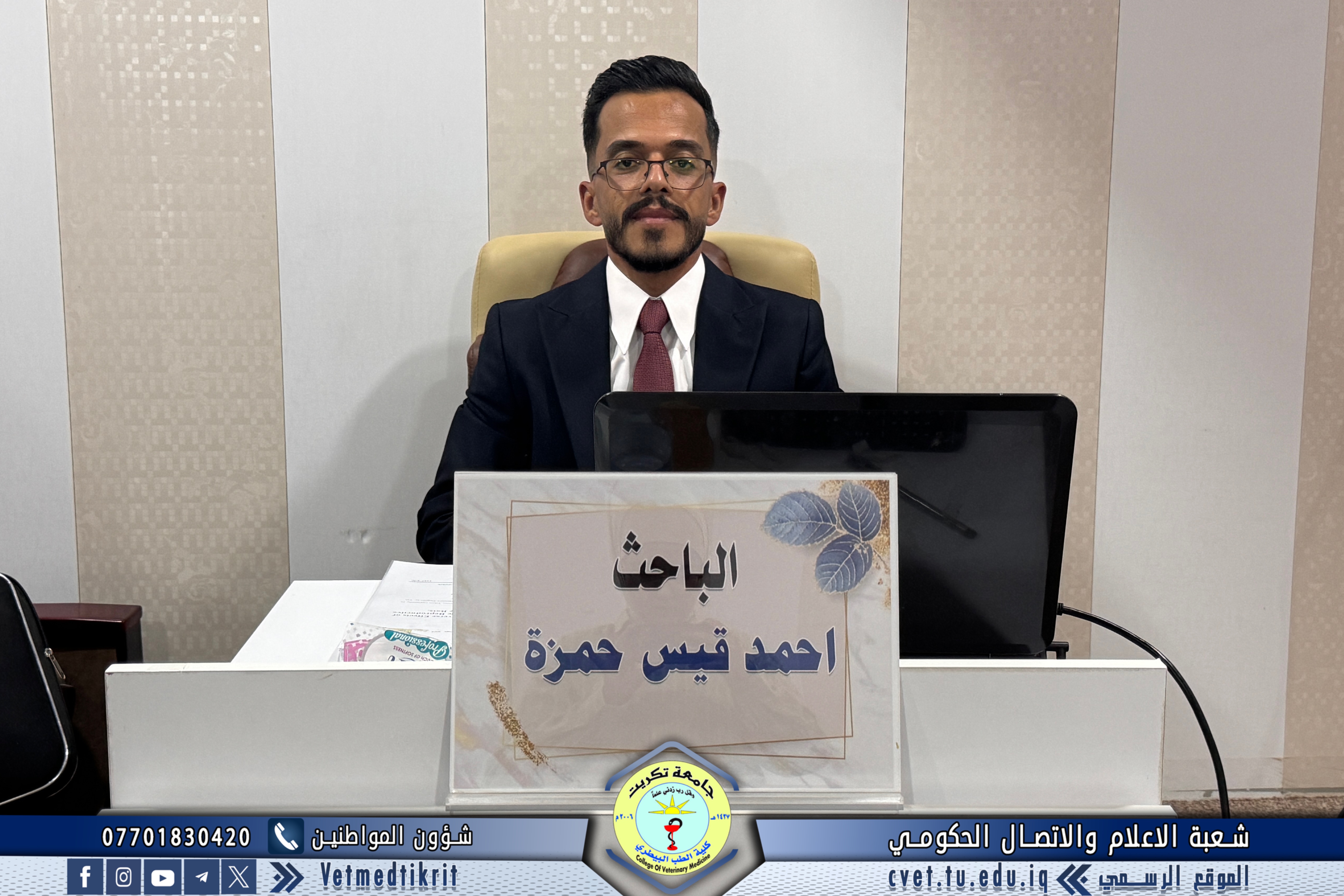By the grace of God, the Master's thesis entitled "The Antibacterial, Protective, and Immunological Effect of Pyocyanin on Pseudomonas aeruginosa Isolated from Otitis Media in Dogs and Cats" was discussed by Ibrahim Hussein Muhammad, a student majoring in Microbiology, at the College of Veterinary Medicine at Tikrit University. The discussion committee consisted of:
- Assistant Professor Dr. Sana Saud Ahmed / Specialization in Microbiology / Tikrit University - College of Veterinary Medicine / Chairperson
- Assistant Professor Dr. Hassan Hadi Khorshid / Specialization in Animal Diseases / Tikrit University - College of Veterinary Medicine / Member
- Lecturer Dr. Raghad Ziad Suleiman / Specialization in Life Sciences / Tikrit University - College of Veterinary Medicine / Member
- Professor Dr. Bashar Sadiq Noumi / Specialization in Immunology and Bacterial Diagnosis / Tikrit University - College of Veterinary Medicine / Member and Supervisor
The abstract of the thesis was as follows: Pseudomonas aeruginosa is an important pathogenic bacterium in the medical and veterinary fields, causing numerous diseases in humans and animals, including wound and burn infections, eye infections, skin infections, urinary tract infections, middle ear infections, septicemia, and bone and joint infections. Among these diseases, middle ear infections are prominent, which are frequently observed in pets such as dogs and cats. To isolate and identify pyocyanin-producing Pseudomonas aeruginosa bacteria and their resistance to antibiotics, 40 ear swabs were collected from domestic cats admitted to private veterinary clinics in Tikrit, diagnosed with otitis, during December 2024. Ear swabs were collected from the infected cats using sterile cotton swabs, and Pseudomonas aeruginosa was isolated and identified. The study demonstrated the isolate's ability to produce large quantities of the exochrome pyocyanin when cultured on King's A medium. This pigment exhibited significant inhibitory activity against S. aureus and Candida albicans, but had no effect on E. coli or E. faecalis, highlighting its potential as a potential antimicrobial. In bone marrow cell cultures, results showed that pyocyanin exerts a direct cytotoxic effect, with varying degrees of damage depending on the associated microbe. The negative effect was greater when pyocyanin was combined with E. coli and E. faecalis, while it was less severe with S. aureus and Candida albicans, due to the hemoglobin inhibiting the growth of these organisms. These results indicate that pyocyanin has a dual nature: on the one hand, it is an important virulence factor for P. aeruginosa, and on the other hand, it possesses antibacterial and antifungal properties that could be employed in future therapeutic fields, provided its concentration is controlled to reduce its toxicity to host cells. The discussion, held in Dr. Muhannad Maher Hall at the College of Veterinary Medicine, was attended by a number of faculty members and students.
